#icons Book of Shadows: Blair Witch 2
Text

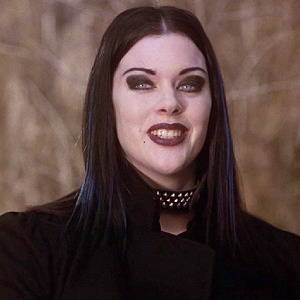



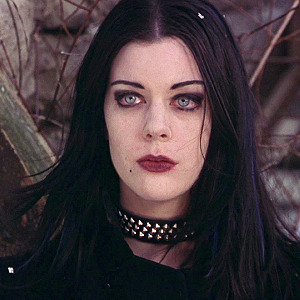

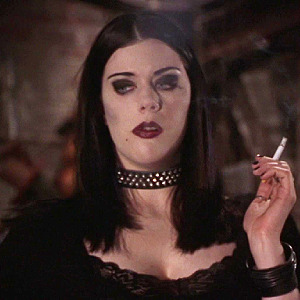

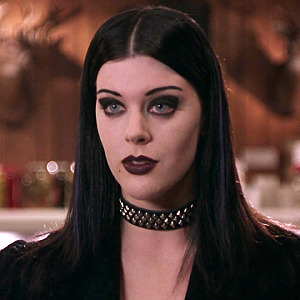


Kim Director in Book of Shadows: Blair Witch 2 (2000)
please if you save or use like or reblog
#Book of Shadows: Blair Witch 2#Book of Shadows: Blair Witch 2 icons#icons Book of Shadows: Blair Witch 2#Book of Shadows#book of shadows icons#icons#horror movies#horror movies icons#icons horror movies#lidya#Kim Director#Kim Director icons#icons Kim Director#Kim Director book of shadows#icons sem psd#icons without psd#screencaps icons#2000s#2000s movie#early 2000s#2000s icons#icons 2000s#movies 2000s#2000s horror movies#movies icons
60 notes
·
View notes
Text
DFF, Found Footage, Technology, and the Real
Okay so I've been slowly looking into horror and technology since watching Shadow, and now DFF has me going down a related research spiral. So let's call this a sibling post to my Shadow technology series (which I am slowly working on I promise).
I just thumbed through a great book on found footage horror and a few other pieces on technology and wanted to use these as a lens to think about DFF and how it's navigating a number of themes including the distinction between reality and fiction.

DFF draws on the concept of found footage films like The Blair Witch Project. Even if DFF's main framing and style isn't found footage, the film the characters are working on is. And we get our most direct reference to a horror film when Jin references The Blair Witch Project--an iconic found footage film. So I want to start by thinking about the Blair Witch Project.
Part 1: The Blair Witch Project and DFF
Part 2: Paranormal Activity, DFF, and the Myth of the Real
Part 3: Films within Films, Surveillance Technology, and Other Connections (Man Bites Dog, Cabin in the Woods, Shutter)
Part 1: The Blair Witch Project and DFF

While found footage horror doesn't purely originate with the Blair Witch Project it certainly rocketed the concept into the popular zeitgeist. I watched the film for the first time this week, and while it didn't scare me*, I could easily see how influential it would've been at the time. The media landscape looked very different in the late 90s, and the film's marketing deliberately played up the idea that this was real footage in a way that simply couldn't be done today with our current media landscape and familiarity with the found footage genre. We're now much more familiar with fakelore as a concept in general.
*The scariest part of watching was the censored subtitles! Stop that please! They seriously were replacing things like "Oh, fuck" with "Oh, boy." I also got a car add about going out to enjoy national parks, and how they can be accessible to Deaf people, which was an interesting moment of double irony.
In her book Found Footage Horror Films: Fear and the Appearance of Reality, which I will be citing quite a bit in this post, Alexandra Heller-Nicholas notes that the Blair Witch Project came out at a time when amateur films were still relegated to home videos but entering public viewing through shows like America's Funniest Home Videos. The style was thus associated much more closely with trying to capture reality than tell a fictional story. The marketing played into this heavily--for example: using the actors' names for the characters, circulating missing persons flyers in areas where the film was being shown, and creating a website that gave background on the Blair Witch myth and information on the "missing" trio of amateur filmmakers. I chatted a bit with @slayerkitty who saw it in theaters. She explained how part of what made the film scary at the time was how real so many people thought it was and the tension of being in the audience.
TBWP and DFF Similarities
Let's start by going over some of the ways DFF might be directly pulling from the film or making homages before jumping into what I think are probably the more significant thematic connections with found footage.
Myths and an Ambiguous Antagonist:

The Blair Witch Project is set against the backdrop of a local myth about a witch in the woods. Three young adults (Heather, Josh, and Mike) go to make an amateur documentary about the witch, get lost in the woods, and are then hunted by an unseen presence. We get information about the myth through interviews with locals and a book Heather reads aloud briefly called The Blair Witch Cult. We learn about the slaughter of 5 men (which is described almost like a ritual), disappearances and deaths, and a man who was compelled by the witch to slaughter children. Similarly in DFF we have our Janta cult, which slaughters people in the name of a supernatural or spiritual force. Now I'd say this could be a nod to TBWP but it also draws on plenty of other ghosts stories and urban legends about the woods. I'm sure there are also particularly Thai valences as well beyond just being Buddhist on the surface.
Like the trio in The Blair Witch Project, the group in DFF goes into the woods to film--though they aren't traipsing through the woods, and the horror they're filming is a story of their own creation. In the present, however, the horror becomes much more than fiction, just like in TBWP. In the film, we see and hear signs that something or someone is following the trio but it's ultimately unclear if it's supernatural, locals scaring them, or them slowly cracking and turning on one another. In DFF's opening episodes it's likewise unclear if what's happening is being caused by a person, hallucinogens, or something supernatural.
Maps and Marketing:

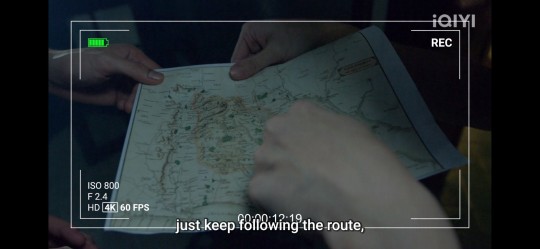
TBWP also shows the characters turning on one another, arguing, and cracking in a way that fundamentally sabotages their survival. At one point, Mike reveals that he threw their map, their only lifeline, into the river. This is paralleled in Fluke turning away their transport and means of leaving. The map is an important focus in the film. We see Heather orienting the group and insisting she knows where they're at, while Mike insists they're lost. This culminates in them losing the map as things start getting worse. DFF slips in what I read as a potentially more direct reference to the film in episode 8. An odd new detail in the group's film where they rely on the hope of a map to get out before they're attacked by the masked killer again.
Another potential similarity to draw on has more to do with the outside marketing of TBWP. Interestingly it was marketed to appear like an indie film despite having pretty extensive funding. This makes me think of the group's film in DFF. This is meant to be a student film but they received a huge boost via Por's dad giving them extra money for a camera.
Smoking and Being Alive:

One other parallel I find interesting is the emphasis on smoking. To be fair TBWP is probably not the first or last horror film to have people smoke (the pot head is a character trope of it's own), and I was likely primed to notice because we already had "Tan smokes and has asthma" on our list of clues for DFF. Now clearly the writers of DFF are smart and are using Tan/New smoking in plot relevant ways. These details feel purposeful to the story they're crafting. But let's briefly look at how smoking shows up in TBWP.
The characters all smoke and drink alcohol. As they get lost and the days tick away they run out of food and smokes. Josh has moments that could be attributed to withdrawal where he laments that they're out of cigarettes. However, after he disappears, Mike finds some remaining cigarettes at the bottom of one of their bags. Mike comments "We're still alive cause we're smoking." For him, it signals even if briefly that they are still alive, that they're surviving.

But in DFF, smoke seems to be attached to death and dissociation. We know that New is a smoker, something he perhaps picked up in England. It starts then as a sign that he has a life, one outside of being Tan. Yet it's that very life, being abroad, that led him to be so far from Non when he disappeared. For New, his life is now tinged with guilt and loss. As @syrena-del-mar noted here, there are moments where he forgets he is supposed to be New. But the smoking becomes his one reminder that "New" is still alive.
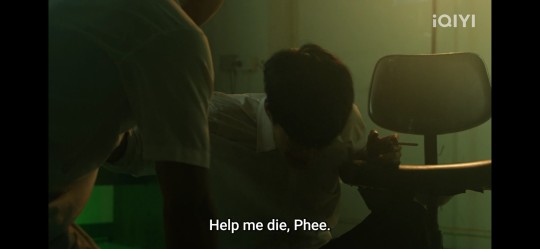
Yet this reminder turns more and more painful. Under the exterior of Tan, he is haunted by New, the brother who didn't make it in time. And this spirals further when his mother and father die. Each time he's a step closer but still too distant to stop their deaths. At this point, he starts getting high to a dangerous degree--dissociating, hallucinating, torturing himself with visions of Non. When Phi steps in we have a parallel moment to Phi stopping Non from taking pills. Smoking turns from a sign of life to one of death as New tries to commit suicide, telling Phi "I don't want to live anymore." And New takes this further when he drugs the rest of the boys. Perhaps he didn't intend it to go so far, but he certainly is happy with the result. His drugs, his smoke have caused fear and death, rather than hope and life.
Except for the map I feel like most of these parallels can as easily be chocked up to direct inspiration as they can be attributed to both pulling on a similar well of genre conventions. What I find more interesting is the thematic conversation TBWP brings to the table for DFF.
TBWP and Thematic Resonances with DFF
Filtered Reality:
In her work on horror, Brigid Cherry remarks that The Blair Witch Project is "about the way in which technology gets in the way of seeing" (qtd in Heller-Nicholas 23). Heller-Nicholas further notes how the camera is constantly in contention with the audience's desire to look at what we want to see. In the film itself, one of the characters even remarks that looking at the world through the camera is "like a filtered reality" because you "can pretend everything isn't exactly like it is."

This looking but not seeing resonates to me with Jin. He looks at Non through the camera, seeing him as innocent, in need of protecting. But there's so much he doesn't see about Non, including the reality of poverty. Jin's perfect view of Non breaks at the moment he sees Non with Keng. But as Jin's filtered vision of Non cracks, he adds a new filter. He frames Non as a slut, someone guilty in his mind, at least in the he heat of the moment. So he records him. In doing so, he papers over the nuances of the situation, that it is SA and that there is so much of Non's life that is outside of Jin's lens.

After Non's disappearance Jin doesn't stop using his camera lens to view the world. In episode 9, he watches the others play soccer and then Phi through his camera. He is pretending nothing happened just like the rest of the group, but for him to do that he has to filter his reality. And just like with Non, Jin isn't able to see the full story around Phi from this small frame of a perspective.

I also think it's worth noting how the show, especially in the flashbacks tends to use strong framing (I note some of this in episode 5 but it persists strongly at least up until episode 9). While they aren't using a found footage style, there's still a sense at times that the camera is limiting our view as it closes in around the characters. It's as if the camera frame becomes hyper-visible, similar but not exactly like in found footage. I'm not entirely sure how to read this just yet, but it feels appropriate for both a mystery and for a story so deeply invested in perceptions. There's a strong focus on what is made visible and what is rendered invisible by the characters, by the story structure, and by the frame of the camera itself.
Gender, Space, Control:
In her discussion of TBWP, Heller-Nicholas discusses the gendered dynamics of the film and how scholars have read the film as invested in the horror of female control. This is captured in two ways. First in the way the woods as a space become imbued with the horror of the Blair Witch (pulling on a tradition of witches being women), and thus the feminine. Second, in the way that Heather, who is the director of their film, leads the group to folly. Scholar Linda C. Badley, has argued that "Heather represents a serious breach in having taken possession of the conventionally male--and often murderous--gaze" (qtd. in Heller-Nicholas 108). Heather thus enters the domain of the typically masculine and the results are disastrous.
I find it interesting to compare DFF with TBWP in this respect because they've taken a genre that often is infused with binary gender dynamics and given us all men, and predominantly queer men. This is obviously a dynamic of BL, but it's interesting to consider how this plays with the themes of gender that often proliferate in horror. This is a much broader topic, and @brifrischu and I are currently reading through Carol Clover's seminal work Men, Women, and Chainsaws so I wager we'll have more to add to the discussion at some point.
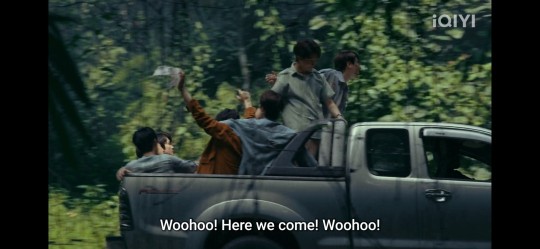
But let's look at a few things. First, if the Blair Witch imbues the woods as a space of feminine horror, DFF paints the woods as masculine. After our cold open, we are introduced to the group as they ride into the forest via Por's narration about the legend of Janta. The subtitles at the very least, refer to Janta using masculine pronouns. I don't want to assume that Thai gender coding and dynamics are identical to western ones but we might consider the way that the group of boys, packed into the back of a truck paint this as a masculine, homosocial space.
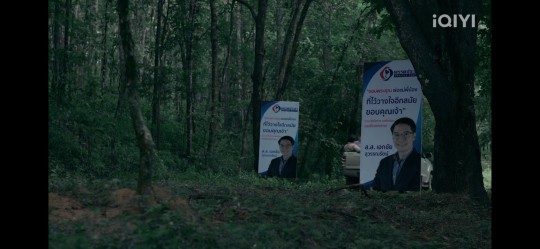
This is reinforced by the mention of Por's father. Por says "My dad warned me that, so I had to listen to him." This masculine authority is doubly highlighted by the campaign posters that literally mark his control of the space. To go any further the group must pass through these signs as a threshold to the space. Here we have not just masculinity being signaled but wealth, power, and control--something that contrasts distinctly with Non, for example, who has none of this. And of course, as we move through the story much of the horror comes from the actions of the core group of boys rather than the masked person we started with.
I find it interesting too that as Por tells the tale, it's White who comments "You almost had me scared." They then have a discussion about Tee liking to teaser "the younger ones." This focus on White as the most vulnerable is interesting given that he reads as perhaps the least traditionally masculine of the group*.
*Another reason why I'm excited to read Clover's work, is because she came up with the final girl formula in her discussion of gender in horror. I'd love to think about how we apply that in a queer context, especially given how so many of us have collectively felt White will be final girl. What might DFF be doing re: gender within the context of queerness, and what might it be asking of us as an audience?

The second aspect of this is the directorial gaze. In TBWP we have a woman taking on the control of a film project. This is important not just because Heather takes on a typically male profession but also because of the way films are imbued with what Laura Mulvey has termed "the male gaze." The view from which we see the world and the terms on which stories are told are traditionally male, while women are objects to be looked at--something Heather bucks and is punished for.
In DFF we have a similar struggle over authorship and directorial control. Instead of a strict division between feminine and masculine gazes, we get a struggle that is imbued with distinctions of class first and foremost. Por stands in as the more traditionally masculine director. We see the violence he does in trying to maintain control of the project. Of course he mostly does this through exerting his wealth. In contrast, Non doesn't fit the more aggressive masculine role, he comes from poverty, has mental illness, and is generally at the bottom of the social pyramid. His authorship comes into tension with Por's desires for directorial and social control.
There's a strong thematic exploration here of not just who gets to tell the story, but who's story gets to be told. In the end, the camera is Por's, his wealth and framing win out, and Non's authorship is buried. Much like the male gaze relegates women to objects rather than directors or authors, the only film that Non gets credit for is the sex tape in which he becomes objectified by the camera.
Of course we then have the fact that, in the present, Non's revenge script is being played out. There's a new director here, and clearly it's not entirely Phi (who tries his hand at directing in episode 1). Regardless of who is orchestrating these moves, we have an inversion of power happening. While we can't say for sure until the show has wrapped up, I suspect that DFF will lean into this inversion, rather than, like in TBWP, punishing this transgression of the norm.
That's all for now on TBWP, but certainly not all on DFF. I'm going to turn now to another important found footage film, Paranormal Activity, to unpack a bit more about DFF and it's themes.
Part 2: Paranormal Activity, DFF, and the Myth of the Real
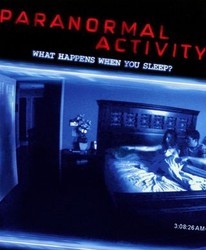
In her work Heller-Nicholas notes how, after Paranormal Activity hit the screen, our view of found footage as a genre shifted. It was no longer seen as necessarily authentic per-se but a stylistic form. Heller-Nicholas puts it like this:
As these more popular found footage horror films made their way to the forefront of the genre, what became important was not that the audience necessarily believed that they were real, but rather that they offered a framework to knowingly indulge in a horror fantasy of the real. The solidification of a recognizable found footage horror style meant that horror audiences understood and identified them as such, defining a subgenre where an authentic style (rather than claims of authenticity itself) prevailed
(Heller-Nichols, 128)
I won't go into smaller parallels between the film and DFF (partially because I haven't seen it, so if you have please add anything you notice), but I want to cover a few thematic resonances.
Heller-Nichols sketches out a few ways that critics have interpreted the film. First, as an allegory for materialism in the context of the US housing market crash of the time. Second, as a reflection on surveillance and the way changes in technology changed our relationship to cinema.
The first theme, materialism and consumption play out in the film through both the financial disparities of the characters and the more metaphorical spiritual/demonic possession that takes place. Both DFF (at least episodes 1-4) and Paranormal Activity take place in a luxurious house and themes of greed and materialism are present. In DFF, Por takes this role, flaunting his wealth and using it to get what he wants. Of all the characters, he is the one most willing to steal credit from Non. In Paranormal Activity the wealthy boyfriend even brags about buying a nice camera on only half-a-day's pay. Similarly Por brags about getting the nice camera for their film with his father's money.

One thing that set Paranormal Activity apart from earlier found footage films like The Blair Witch Project, was it's use of security camera footage. It relied on a new type of gaze that made the private public in the context of shifting surveillance technologies. While DFF largely centers itself around a film camera, it also includes other forms of technology in the background, including surveillance cameras. The CCTV cameras in Por's house come to mind as a significant way this technology comes into play. On the one hand, it helps Por identify that there is an intruder, and it helps the group find him when he is hurt. On the other hand, it encroaches on the private, capturing White and Tee having sex. This private vs public line is of course horrifically crossed when Jin records Non and Keng and when this video is circulated--surveillance right in our hands via cell phone.

Heller-Nicholas notes that post-Blair Witch, and by the time Paranormal Activity was released, audiences were much more genre savvy. She notes that the genre's "pleasures are not reliant on our gullibility, but rather our willingness to succumb to the myth of the real that these films offer..." (26). Relevant to DFF, I want to stress the "willingness to succumb to the myth of the real." I discussed earlier how Jin doesn't see Non; instead, he is happy to succumb to a myth of what could be the real Non.
But it's not just Jin who does this. Almost everyone around Non believes they see him correctly--as "Greasy", as a bad son, as a cheater, etc. This takes on even more public dimensions as the police enter the picture, as the sex tape circulates, and as the police report that he has run away with Keng. What people see and believe about Non, the narratives they tell about him, help reinforce people's existing understandings of the world--their prejudices, their assumptions, their myths of how the real world works.

And of course, film is at the center of this. The police believe that Non wasn't with the group when he disappeared because any footage he was in was hidden from them. Non is erased from the film (both in the footage and in terms of credit). The entire film premier is one big moment where everyone in the group is playing into this myth. It is taken as fact that Por's name being in the credits means this is his work--that nothing or no one of note was hidden behind the frame.
In her work Heller-Nicholas points to discovered manuscript fiction (such as Dracula) as a precursor to found footage horror. This connection highlights the way these works rely on the fiction that someone has organized the documents apart from the original author. The fictional framing of found footage as pretending to have an original author or filmmaker other than the actual director, hides the fact that The Hidden Character has in many ways literally stolen credit from Non. The genre expectations obfuscate the real story.
And then there's the sex recording (the only film Non gets credit for). We see a number of reactions to the recording from people in Non's life as well as those outside of it. The social media posts in particular stress the way Non's vulnerability is quickly slotted into pre-held narratives of sex and sexuality that refuse to see the reality of SA.
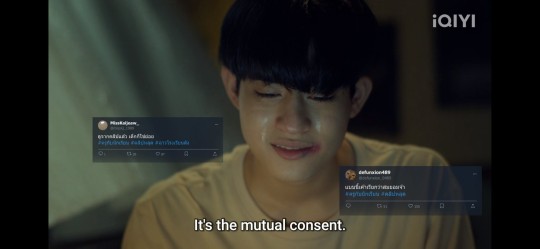
Non's SA is taken as truthful evidence of his consent via social media, while the film the group made is found footage but not seen as real. I think this marks an interesting change in the aesthetics and narratives we find "real." Horror and found footage are legible, a chance to engage in "a fantasy of the real". Meanwhile, the real story behind the film is erased, just like Non. Sadly, the most legible narrative of a young queer boy is that the phone footage is slutty or even hot. No one questions the authenticity of the recording, it is viewed as real. Ironically, compared to the horror film the group shoots, the sex tape is the real found footage film. Yet the "reality" it shows is filtered through interpretation. Non's reality gets buried.
Meanwhile, as an audience, we have the opposite reaction. We are slowly given insight into the discrepancy between Non's reality and the myths people hold. We keep asking why other characters can't or won't see the truth, why they won't help Non until it's too late.
DFF may not be found footage itself, but it is certainly interested in exploring and extending the thematic conversations about authenticity, reality, and narrative.
Part 3: Films within Films, Surveillance Technology, and Other Connections
Despite the fact that DFF references and dialogues with the found footage horror genre, it formally has more in common with films that center around technology and films within films. So I wanted to cover three more films that I think dialogue in interesting ways.
Man Bites Dog:
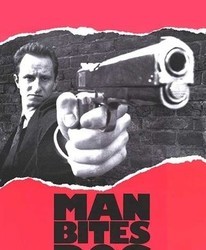
I'll start with Man Bites Dog since I have the least to say about it. It is a 1992 French mockumentary and black comedy, that Heller-Nicholas notes is a pretty significant and well-acknowledged precursor to the found footage horror genre. I'm not sure I want to get to deep into themes with this one. But I thought the parallels were interesting. A film crew decides to make a documentary where they follow a serial killer named Ben around only to be pulled into the crimes and become culpable themselves. That is, until Ben is killed and the film crew are taken out one by one by an unknown killer. We have a film crew that slowly gets involved and more culpable in wrong doings, just like in DFF we have the group working on a film while slowly becoming more and more culpable in harming Non. Meanwhile in the present both "film crews" are suddenly being hunted and picked off by an unknown party.
Cabin in the Woods:

Cabin in the Woods is a 2011 film that satirizes horror. A group of college students go to a cabin in the woods and are slowly picked off. The twist is that this is all orchestrated by an organization that is simultaneously surveilling and orchestrating their deaths to appease ancient deities. Many of the shots are done through drone's and other similar visuals to highlight the way the group is being surveilled. In a chapter from a collection on horror and gender, Hannah Bonner looks at Cabin in the Woods and a few other films that include surveillance and social media. She discusses the way technology in these films revolve around slut shaming young women. As she puts it, "It is the 'fact of being constantly seen', whether by high key government surveillance systems or by judgemental peers, that throws these characters into disarray or death" (89).

For Cabin in the Woods one thing Bonner examines is the way the film frames the group's "slut" character Jules. Jules and one of the guys go outside to get intimate. And the film moves between this scene and the men surveilling them who watch eagerly. Bonner reads this as a commentary on the violent gaze with which horror frames women. She makes a distinction, noting that "The voyeur is no longer just the audience, squirming in their seats from Michael Meyers's point of view as he tracks down his naked sister and her boyfriend in Halloween...now the audience as voyeur watches the voyeurs watch the surveyed" (90).
DFF makes a similar move by staging multiple instances of filming (a film within a film, or in this case a film within a show). We get a moment in episode 1 where Tee steps forward to block the group watching the CCTV footage of him and White. But this denial is in contrast to other moments. The show draws us most into being voyeurs watching voyeurs, when Jin films Non. I think it's important to note that both the moment that Bonner discusses in her chapter and this moment in DFF are sexual. In CITW, Jules is literally labeled by her surveillers as "the slut", a role she must fulfill and be killed for to appease the gods. Her lack of agency is made quite apparent. In DFF, Non is also slotted into the role of the slut by those around him, including Jin when he films the moment out of anger. While the show is not as on the nose about the whole thing, it's still clearly establishing a discrepancy between how Non is viewed by those around him due to the tape and the lack of full agency he possesses.

Moreover, by making us viewers voyeurs of this voyeurism, DFF creates a critique rather than simply a simulation of voyeurism. I am considering how this might not just be a commentary on sex shaming, but sexuality within a space where BL has historically crossed the line at times in terms of depicting SA. Or even the way that BL actors in Thailand are often expected to blur the line between the private and the public through fan service. It's interesting because clearly the show also doesn't shy away from letting us be voyeurs to sex. The show perhaps draws a distinction between representing queer sex and SA. But it's fascinating how this is mediated through voyeurism and the camera's gaze.
Shutter:
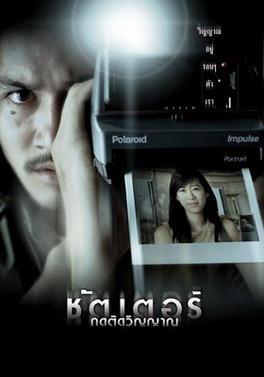
I couldn't wrap this post up without talking a bit about Shutter. Shutter is a 2004 Thai horror film (and probably Thailand's most well known horror film globally). It was part of the horror boom of the late 90s and early aughts in Thailand and Asia. If you throw Thai horror and cameras my way, I will think of Shutter. I watched it as part of some research I've been slowly doing on late 90s/early 2000s Asian horror and technology (writing meta for Shadow the series). It's a story about haunting that takes inspiration from the idea of spirit photography.

The film follows a couple, Jane and Tun, both photographers, who start seeing shadows and faces in their photos. Jane discovers that the ghost is a girl named Natre who Tun used to date in secret. They proceed by trying to figure out how Natre died (suicide) and how to get her to move on. Meanwhile Tun's friends suddenly start killing themselves. Ultimately Jane learns that Tun's friends raped Natre, and Tun not only didn't stop them but even photographed the assault at his friends' request (so Natre wouldn't snitch). Jane confronts Tun who expresses his regret, that he "never forgave [himself]." In the climax of the film Tun uses a polaroid camera to try and find Natre's ghost in real time before being driven out the window. Natre let's him live, in a near catatonic state, unlike his other friends because his betrayal hurt the most.

We once again come back to themes of voyeurism, SA, peer pressure, and culpability. The film has strong focus on the effects and betrayal of being a bystander, much like DFF does. Again this parallel is made quite strongly with Jin. Non may not have had feelings for him, but he is the kindest of the group, making his betrayal hit strongly. Jin filming Non and Keng has it's own nuances within DFF, but it certainly parallels Tun photographing Natre's assault. Similar to Non, Natre disappears in the aftermath, while Tun and his friends go on with their lives.

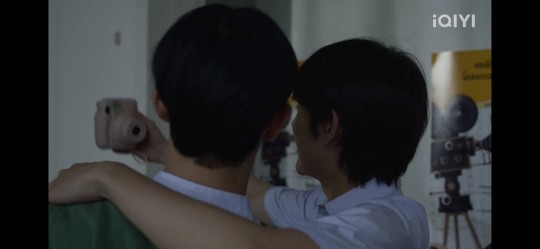
On a smaller note, both Tun and Jin use polaroids in what is potentially a reference to the film.
As the truth is revealed, Tun goes from a protagonist to a villain, and Natre goes from the horror of the story to the victim. DFF seems equally interested in the idea of how truths get hidden and justice withheld. It also gives us an inversion of the source of horror. By the time we end episode 5, the group we've gotten to know over four episodes are clearly villains in our minds, their cruelty becomes the horror rather than the masked killer who we come to empathize with (or at least root for to some degree). Now how this fully plays out in the end might shift things. But currently (up through episode 9) this is a horror story locating horror in power and cruelty rather than simply reinforcing a more conservative world view of the non-normative monster.
Concluding Thoughts
Dead Friend Forever is mixing genres in a smart and deft way. It's clear that the writers and director are well versed in horror and are ready to play with genre conventions to deliver their ideas and themes. Some of the connections I'm making here might be happy coincidence where the works speak to each other mediated by my own perspectives and interpretation. But I also believe that the show is building on themes and traditions in horror and found footage horror specifically in smart ways. From the framing of shots, to the way they deftly speak to themes of (in)visibility, power, reality vs fiction, agency, and sexuality (among others).
Through all this, DFF has been incredibly genre savvy. While found footage plays on the idea of reality, DFF shakes that up by throwing a who-done-it mystery our way. Like in The Blair Witch Project, for much of the show, we don't know what's real or what's in the characters' heads. DFF, however, picks up where TBWP stops. At the end of TBWP, the characters are likely killed off camera, the source of the horror still left up in the air. DFF gives us this ambiguity, but then pivots and makes the show a mystery to solve rather than locating the horror in ambiguity. This is because the horror lies elsewhere. Like in Shutter, the monster becomes the victim, our sympathies are played with, and we're left with a show that is as interested in social and political critique as it is in having fun playing with horror tropes.
Sources:
Heller-Nicholas, Alexandra. Found Footage Horror Films: Fear and the Appearance of Reality. McFarland & Company, 2014.
Badley, Linda. Film, Horror, and the Body Fantastic: Praeger, 1995.
Bonner, Hannah. “#Selfveillance: Horror’s Slut Shaming through Social Media, Sur- and Selfveillance.” Gender and Contemporary Horror in Film, edited by Samantha Holland et al., Emerald Publishing, 2019, pp. 85–99.
Cherry, Brigid. Horror. Routledge, 2009.
Shutter (film, 2004)
Cabin in the Woods (film, 2011)
Man Bites Dog (film, 1992)
The Blair Witch Project (film, 1999)
Paranormal Activity (film, 2007)
#i think next i want to write a piece on Tan/New and the way the show is drawing on the mad scientist sub-genre#dead friend forever#dff the series#dff meta#my posts#my meta#dead friend forever meta
80 notes
·
View notes
Text
I’m thinking of changing my icon….But it’s been years….if I change it please remember me as Kim director in book of shadows: Blair witch 2 in your hearts
6 notes
·
View notes
Note
erica leerhsen as erica geerson in book of shadows: blair witch 2 icons please 🥰
done 🥰
1 note
·
View note
Text
How Final Destination Went From Real-Life Premonition to Horror Phenomenon
https://ift.tt/30jSLcc
The year 2000 was a scary one for horror films and not always in a good way.
While American Psycho and The Cell offered up visually striking nihilistic thrills to genre fans, the majority of horror movies released at the dawn of the new millennium were at best forgettable and, at worst, lamentable – yes, we’re looking at you, Leprechaun in the Hood.
This was the year of duff sequels like Book of Shadows: Blair Witch 2, Urban Legends: Final Cut and, though it is painful to admit, Scream 3. Horror fans were screaming out for something different, something exciting. They found it with Final Destination.
Discarding the stalk-and-slash thrills that had enjoyed a revival in the years following the release of Scream, Final Destination centered on a group of high schoolers who end up avoiding a fatal plane crash thanks to a premonition, only to discover there is no escaping death’s plan as one by one they are offed in a variety of brilliantly inventive “accidents”.
Released in March of that year, Final Destination was a sleeper hit with word-of-mouth helping the film to clean up at the box office, earning $112 million off a $23 million budget with more than half of that coming internationally.
To date, it has spawned four sequels as well as a variety of novelisations and comic book spin-offs while a franchise reboot is also on the horizon.
Read more
Movies
The Final Destination Movies, Ranked
By Sarah Dobbs
Jeffrey Reddick has worked on several films during his career to date but he’s probably best known as the creator of Final Destination. It’s something he has come to terms with.
“It’s probably going to end up on my gravestone, it’s such an ironic title,” he tells Den of Geek.
“Sometimes I’ll be out and I will hear someone say ‘you just had a Final Destination moment’ and it will make me smile. The whole thing just took on a life of its own.”
Nightmarish Origins
A screenwriter and director, Reddick recalls how his neighbors in rural Jackson, Kentucky, would laugh when his six-year-old self would tell them about his plans to work in the movie business.
An avid writer and reader of Greek and Roman mythology, he recalls spending his formative years watching horror movies with his friends. His mother was only too happy to indulge his burgeoning interest too, knowing it kept him out of trouble elsewhere.
Reddick’s life began to change after he saw A Nightmare on Elm Street.
“That film cemented my love of horror. I was this 14-year-old hillbilly from Kentucky but I decided I was going to write a prequel. I went home, banged it out on my typewriter and sent it to Bob Shaye.”
The legendary head of New Line Cinema initially dismissed Reddick’s draft out of hand, returning it with a note explaining the studio did not “accept unsolicited material.”
Undaunted, Reddick sent the script back with a note telling him “Look mister, I spent three dollars on your movie and I think you could take five minutes on my story.”
Shaye was impressed and struck up a bond with the youngster that saw him sending everything from scripts to posters to Reddick during his teenage years.
When Reddick moved to New York to study acting, age 19, he was offered an internship with New Line, which would become a full-time role despite acting being his “main passion.”
“Diversity in casting was not a thing at that time,” he recalls.
“My agent was like ‘I don’t know what to do with you as an actor. We can’t put you up for gangsters or pimps and you don’t rap and you don’t play basketball.”
“So I figured, screw it, I will just write stuff and put myself in it.”
Reddick was present at New Line during their company’s early 90s creative heyday and credits the experience with helping him get Final Destination off the ground.
“I learned a lot about how to get a movie made. I knew that to make a movie that connected with an audience you had to tap into something that was universal. Death is the ultimate fear.”
As luck would have it, the idea actually came to Reddick while on a flight back to Kentucky.
“I read about a woman who was on vacation and her mother told her not to take the flight she was planning to take home as she had a bad feeling about it. The woman changed it and the plane she was supposed to be on crashed.”
At that point however the idea wasn’t Final Destination. It wasn’t a film either. It was an episode of The X Files.
The Truth Is Out There
“I was trying to get a TV agent at the time and they recommended I write a spec script for something already on the air. I was a huge fan of The X Files and thought about a scene where somebody has a premonition and gets off the plane and then it crashes and used that as the plot.”
“It was going to be Scully’s brother Charles who had the premonition. He gets off the plane with a few other people but they start dying and Charles blacks out every time there is a murder so people suspect he is doing it.
Read more
TV
I Still Want to Believe: Revisiting The X-Files Pilot
By Chris Longo
“The twist at the end was that the sheriff who had been investigating alongside Mulder and Scully the whole time had actually been shot and flatlined at the same time as the plane crash. Death brought him back to kill off all the survivors, including Charles.”
It would have made for a great episode except it was never submitted to The X Files. Reddick showed his spec script to some friends at New Line who were so impressed, they told him to develop it into a treatment for a feature, which was eventually purchased by the studio.
Producers Craig Perry and Warren Zide were brought onboard to develop the story and set about tweaking his idea.
“Originally the cast of survivors were adults because I wanted to explore more adult themes but Scream had come out and teenagers were hot again so New Line got me to change it”
In a twist of fate, two established writers from The X Files, James Wong and Glen Morgan, were brought onboard to rejig Reddick’s script.
“My version was definitely darker and more like A Nightmare on Elm Street,” he says.
“In my script, death would torment the kids about some kind of past sin they felt guilty about. They would then die in these accidents that ended up looking like suicides.”
For example, Todd’s death saw him chased into the family garage by an unseen specter where he accidentally ended up rigged in a noose triggered when his dad opens the automatic garage door.
Death is all around us
Ultimately that death scene and several others were ultimately scrapped in favour of what would prove to be the franchise’s calling card.
Reddick credits Wong and Morgan with coming up with the idea of having the film’s key death scenes kicked off by a Rube Goldberg machine-like chain-reaction that would see everyday things colliding to create a lethal scenario. It was nothing short of a masterstroke.
“It created this notion that death is all around us,” Reddick says.
“Death would use everyday things around us. It made it more universal and allowed us to set the deaths in places where people go all the time. The payoff would be fun but it was the build-up that had you on the edge of your seat.”
There was one major sticking point for the studio though: the presence of death, or rather the lack of.
“I fought really hard to make sure we never showed death because for me, if you didn’t show it, it could be something someone, no matter their belief system, could project onto our villain. That was a tough sell for the studio. They would be like ‘this doesn’t make any sense, you can’t see it and you can’t fight it’ but that’s the point, it’s death.”
“Luckily both James Wong and Glen Morgan were very insistent we never show it and tie it in to a specific belief system.”
Reddick credits the move with helping Final Destination become “an international phenomenon”.
“It struck a chord with people around the world. It broke out beyond the horror audience.”
Casting dreams
When it came to casting, Reddick had a clear idea of who he wanted in the lead roles, even if the studio’s opinion differed drastically.
“I had a wish list with Tobey Maguire and Kirsten Dunst as my two leads but New Line was like ‘well…’”
He might not have got his first pick but Final Destination boasted an impressive cast of up-and-comers who had already made waves among teen audiences.
Devon Sawa had starred in Idle Hands, while Ali Larter was known for Varsity Blues and Kerr Smith was a regular on Dawson’s Creek. There was even room for Seann William Scott, fresh from his breakout turn in American Pie who was drafted in on the recommendation of producer Craig Perry, who told Reddick “you’ve got to get this kid, he’s going to be huge.”
Even so, Reddick was left a little unhappy.
“One of the conversations we had early on was like ‘Just remember this is set in New York, which is one of the most diverse cities in the world so let’s make sure we have some diversity in the cast’ and they were like ‘oh we will’ and then there wasn’t anyone who wasn’t white in it.”
New Line chief Bob Shaye did find a way to make amends on some level at least, casting Candyman horror icon Tony Todd in a cameo role as a mysteriously foreboding mortician.
“He called me up and said they had got Tony Todd and I flipped out. He is an icon. Such a talented, serious actor.”
As well as co-write the film, Wong took on directorial duties while each of the film’s death sequences would require careful planning, his first aim was to have the film start with a bang by creating as terrifyingly realistic a plane crash as possible.
“We want to do for planes and air travel what Jaws did for sharks and swimming,” he declared in one interview.
Yet the film would later garner criticism for its eerie similarities to the explosion and crash of TWA Flight 800 off East Moriches, Long Island, New York in 1996 where 16 students and five adults died.
“There was some criticism that the movie was written to exploit this real-life crash,” Reddick recalls.
“I even realised later they used footage from one real-life crash which I wasn’t particularly happy about.”
Indeed, much of the news footage shown in the film actually came from the 1996 crash.
That didn’t stop the film becoming a major hit and spawning a sequel within three years.
Final Destination meets Game of Thrones
Reddick returned to write the treatment for Final Destination 2, determined to move the franchise away from its teen Scream origins.
“We had tapped into that zeitgeist and didn’t have to do that again. I wanted to expand the universe and subvert it, so I had it open by following a bunch of teens who are then killed off.”
Once again, divine intervention led to divine inspiration for the opening set piece.
“Originally, I was going to have it open with some kids going to spring break and they stop off at this hotel and there is a fire but the producers were not sure. Writers always say you should go out and live life – life informs you and a lot of inspiration comes out when I go out for a walk.
“I was driving back to Kentucky to see my family and I got stuck behind a log truck and the idea just came to me. I pulled off the highway and called Craig and was flipping out with this idea for a log truck on a freeway.”
The resulting freeway pile-up that leads to multiple deaths is one Reddick ranks as his “favourite scene in the entire franchise.”
“The second film is my favourite. I wanted to create a sequel that didn’t feel like a remake of the first. It went in a more fun direction – but it’s still scary.”
That first sequel also represented the last of which Reddick was formally involved in, though he remained very much in the loop as the Godfather of the franchise, revealing that producers had been “looking at scripts before Covid hit.”
He also revealed that, at one point, things looked to be heading in an altogether different and thoroughly fascinating direction.
“There was talk about setting a Final Destination back in Medieval times. Like Game of Thrones in Final Destination. Craig Perry worked with a writer and they talked about the idea and put a teaser trailer together [which has leaked online].
“I would go and see that movie in a heartbeat but the studio said that the reason Final Destination was so popular was that element of deaths in normal, everyday situations.”
Future Destinations
Reddick hasn’t given up on a return to the franchise though, hinting at a “unique” idea he has for a new film that is simply too good to reveal yet.
In the meantime, he has been busy writing and directing Don’t Look Back, a film that shares some surface similarities with Final Destination and is painfully relevant to society today.
“It’s a mystery thriller about a group of people who witness someone getting fatally assaulted in a park and don’t help the person and somebody films them and puts it online. The public turns on the witnesses and someone or something is coming after them.”
Eager to make more horror films and celebrate diversity in his work, Reddick remains immensely proud of Final Destination and the impact it has had on audiences.
cnx.cmd.push(function() { cnx({ playerId: "106e33c0-3911-473c-b599-b1426db57530", }).render("0270c398a82f44f49c23c16122516796"); });
“It’s cool. To have one movie that is going to be talked about after you die is a life goal. If that’s what I leave behind as a legacy that’s enough – but I still want more.”
Don’t Look Back is available on DVD & Digital from 14th June
The post How Final Destination Went From Real-Life Premonition to Horror Phenomenon appeared first on Den of Geek.
from Den of Geek https://ift.tt/3oUb1UD
15 notes
·
View notes
Text
The True Story Behind The Blair Witch Project (1999), And The 13 Real Urban Legends About Witches That Will Make You Lie Down And Cry
It’s been mocked, and it’s been made a cultural icon.
It kick-started a horror trend, and it kicked itself down to the dregs of the film industry.
The Blair Witch Project (1999) is a point of contention among horror fans - you know, a bit like bringing up trans-rights at dinner with your UKIP Aunt sitting two seats down. But, just like trans-rights, we have to talk about it.
(Fuck you, Jane.)

The Blair Witch Project - and her 2 sequels - was the first film to turn on the camcorder and document the search for something supernatural.
This was the OG clickbait, this was the beginning of horror films claiming to document true events (ahem Paranormal Activity ahem), and this was the end of horror films being taken seriously.
But it was also these three things that grabbed everyone’s attention.
The original film was based on the claim that in 1994, 3 students went missing whilst exploring the supposedly haunted woods of Burkittsville Maryland. 5 years later, the footage they captured was found and put on the big screen.
Were these real events being documented?
Did these kids actually go missing?
And was the Blair Witch real?
Spoiler alert: no, nope, and not at all.
But even if this specific case wasn’t true, the film itself is unnervingly accurate. Like, literally last night I was researching all the different urban legends relating to witches in the US and I was convinced I had awoken the spirit of the Bell Witch.

So, considering the solidarity I have with the followers of this blog, I’ve decided to traumatise you, too.
This article is going to provide the summary to the three forgotten ‘n’ fucked-up films that make up the series, tell you why the Blair Witch is an uncomfortably accurate portrayal of witches historically, and finish up with a stroll through the 13 urban legends that are just like the one featured in the film.
Pull on your hiking boots, and hand me the map.
Let’s get spooky.
Here’s A Quick Summary Of The Blair Witch Film Series
Ahh, the 90s.
Will Smith was gettin’ jiggy with it, and Trump wasn’t President. Times were so much easier back then!
Well, not for budding film students Heather, Mike and Josh, who packed up their filming equipment in a car and headed to Burkittsville, Maryland to make a documentary about the urban legend of the Blair Witch. (The Blair Witch Project (1999))
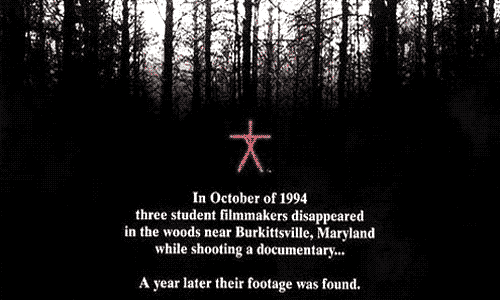
They start off by interviewing locals, and capture a few key details that set up the rest of the film and its sequels. It is claimed that Rustin Parr was a bloke who lived in the woods and kidnapped several children in the 1940s.
Why? Because the Blair Witch told him to do so. Two fishermen confirm the legends of the woods being haunted, and mention some lass called Robin Weaver.
Kidnapped in 1888, she returned 3 days later, claiming the witch was “an old woman whose feet never touched the ground."
Having heard the tales and waited out the warnings, they begin their journey and head to their first stop, Coffin Rock. Supposedly, 5 men were murdered in a ritualistic fashion here in the 19th century, and their bodies disappeared without a trace.
The next day, they continue their travels, and their ordeal begins. They arrive at an old cemetery which is made up of cairns (piles of rocks which turn out to have ritualistic meaning) and camp nearby. Noises are heard round the tent all night, like twigs snapping, but they reduce this to woodland creatures.
The following day, they realise they are lost and cannot find the car. The activity escalates, but is found to be unexplainable.
They then begin to fight between each other, and encounter a section of humanoid stick figures hanging from the trees. Their evening entertainment of weird noises around the tent resumes, but this time the laughter of children is added to the remix. Something then attacks their tent, sending them fleeing from their campsite.
Some people will just never like dubstep.
They return to their tent, and discover that their possessions have been rifled through, and slime covers Josh’s stuff. The fighting ensues, and Josh straight-up fucks-off.
His screams are then heard one night, and Heather and Mike deduce it to be the witch’s fabrication to draw them out of their tent and into her grasp.
Her trap is confirmed when Heather finds a bundle of sticks the next morning containing a ritualistic goody-bag containing what appears to be left of Josh.
That same night, she records her infamous apology video in a style not dissimilar to most YouTubers who have been caught being racist/homophobic/[insert any terrible thing].

Once again, Josh’s screams are heard and they follow them to a house bearing demonic symbols and the bloody handprints of children. Not the aesthetic I myself would go for, but it worked for the Blair Witch...
Mike and Heather stumble into the basement, and we witness our favourite vloggers being killed in the manner described earlier in the film:
One child would face the corner of the basement while the other was being slaughtered. The last shot of the film is of Mike standing in the corner of the basement, suggesting that Heather is the first to die at the hands of the witch.
The second film (Book Of Shadows: Blair Witch 2 (2000)) follows up on these events a year after the footage was found. A gaggle of fans of the original film troop to Burkittsville to explore the legend and the circumstances of the kidnapping of Heather, Mike and Josh.
This film is messy and complicated, and it’s for that reason that I don’t want to waste 8,000 words on a film that is actually ignored by the film series. So, I’m going to give you a tl;dr, instead:
Basics, this film documents the group of fans and tourists being turned against each other by the witch. They go to the house where shit reportedly went down, and set up surveillance cameras to document potential activity.
It’s the first film, but with hell of a lot more activity. And it culminates with the symbolic hanging of someone who appears to be inciting the demonic rituals scattered across the film as they are reportedly possessed by the Blair Witch.
Unfortunately, we don’t learn anything new in this film - we simply see the greater extent of her powers.
Tired, yet?
(Bored, perhaps?)
Our journey is almost over, and it ends with Blair Witch (2016).
This film ignores the events of the second film, and follows a group of documentary makers as they explore the legend of the Blair Witch - but this time it's not about capturing paranormal activity. They go to investigate a peculiar video on YouTube that proves that Heather - the woman from the OG cult classic - might just be alive.
The brother of Heather leads this group, and focuses this documentary on the desire for closure.
Despite skipping out the Book of Shadows, it basically sticks to that exact premise. Surveillance cameras are set up, and showcases the witch’s methods of turning the crew on each other, but on an even greater level. We even see the witch, alongside a couple other creatures in tow...
It finally gives us behind the scenes insight into the paranormal activity, and ends with everyone dying!
Sigh.

The Blair Witch Is Based Off Of Urban Legends - And Is Uncomfortably Similar To The Stories
Despite its many flaws, The Blair Witch Project does one thing right: we never see the witch.
But it’s the way that her control of the woods and those within it is portrayed that points to the terrifyingly accurate nature of the witch when compared to other urban legends.
The film’s fictional legend gives up minimal information regarding the Blair Witch:
We know she was responsible for residents - especially children - going missing throughout the 18th and 20th century, and we know that the locals of Burkittsville claimed that the Blair Witch was the ghost of Elly Kedward, a woman who reportedly practiced witchcraft and was sentenced to death in 1785.
This salem-witch-what-died-but-didnt-really-die-no-one-really-knows is a common basis of the urban legends that will be explored later in this post, but it's the other attributes of the witch that draw her even closer to the claims made around these cases.
The focus of this is that the Blair Witch represents the crone, one of the core concepts of paganism and many other ancient religions. Of the few glimpses we see of a creature that could be the witch and the descriptions of her made by the locals of Burkittsville, we piece together the image of an elderly, monstrous being.
Take this clip from the final film in the saga:

This unnatural-looking humanoid bears a resemblance to the claims of witches in folklore, such as breasts sagging below waistlines, or bones jutting out of their flesh. Add on top of this the animalistic claims from the original movie - like that one woman claiming she saw her arm which was coated with dark hair - and we arrive at a rather monstrous being.
But this animalistic account does not merely echo her ugliness; it forges the link between the witch and her powers over the woods she resides in.
As the maiden becomes the mother, and the mother becomes the crone, her connection with nature grows. It reaches the extent from which her connection with nature is greater than that of her male counterparts, threatening almighty patriarchy and cursing her as the evil witch she is!!1!
Furthermore, it's not difficult to see the links between the woods she controls, and the imagery of life and fertility. Add a smattering of rumours about kidnapped children, and the house of Rustin Parr becomes a womb.
(Less PMS, more blood.)
More so, by harnessing the powers of nature, she blurs the boundaries between the genders. Heck, she even goes as far as to blur the boundaries between reality and the reality she creates for her victims!
She tricks them into falling out with each other, she confuses them by creating this unnavigable wood, and she ensnares them into her invisible trap.
Or, translated into simple terms, the Blair Witch fulfills the concept of the Monstrous-Feminine, a theory conjured up by Barbara Creed. On one hand it suggests women are either portrayed as the victim within horror films, and on the other it suggests that when the woman becomes monstrous, she takes on extreme attributes regarding the female reproductive body.
Guess which one the Blair Witch is.
But this theory didn’t start with Babs sitting in a room and getting her feminist on - Creed deconstructs notions that can be traced back to the era of the Salem witch trials. Each and every urban legend starts here, when it was #on-trend to burn your local witch.
The Blair Witch is the puppet master in these films.
And she is not the only one that is pulling the strings.
The Real Urban Legends About Witches That You Need To Know About
“So, the Blair Witch is some chick who hasn’t shaved in 3 months and has a metaphorical vagina?”
Ok, fair enough.
The Blair Witch isn’t directly based on a specific urban legend, so yes, delete the sage from your Amazon basket and buy those limited edition poptarts, instead.
…
Oh, you thought this post was over?
My little ghoul - this is The Paranormal Periodical. You didn’t think I’d let you leave without informing you of that witch roaming around your local area, would you?
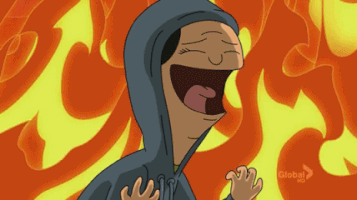
‘Course not. Here are the 13 real urban legends of witches that’ll scare the shizz outta you.
#1 - Naale Baa
We trade in deep woodland in Maryland for Karntaka, India for this local legend. And within minutes of arriving, you’ll spot the word ‘naale baa’ on the walls - a decoration not dissimilar to that seen in Rustin Parr’s crib.
It is claimed that by writing these words on their walls they can deter the witch that wanders from house to house in search of her husband.
Glammed up in full bridal wear, Nale Ba (as she is also known) supposedly attempts to entice the man of the house, and then curse the family with bad luck.
In the 1990s, this urban legend faced a particular resurgence, and even evolved to claim that she would imitate the voices of victim’s family members to encourage them to open the door. But when the door is opened, you die!
How? No idea.
Am I still scared? Hell yeah.
But I’m not the only one concerned about this witch - claims that multiple men in Thailand just disappeared from their beds in the middle of the night were pinned onto this urban legend.
#2 - The Bell Witch
This is probably the most famous legend regarding a witch puppeteering an innocent family’s life.
The story starts in 1817. A family begin to witness signs of paranormal activity on their farm that targets the man of the house and his daughter, Betsy. A variety of large animals are seen across their farm and follow the family and their slaves. Strange noises then begin to fill the house, like invisible chains being dragged on the floor, or dogs fighting. Betsy repeatedly claims that she can see a little girl playing on the swings.
But this friendly ghost then begins to attack the child, slapping her and scarring her with pins.
The man of the house then begins to demand answers about these spooky shenanigans, and straight up asks the spirit what the shit is going on.
The spirit gives ‘em a lowdown of her backstory - a bit like those clips from the X Factor where they use Katy Perry’s Firework over the top of this 16 year old girl’s turmoil regarding GCSE maths - and claims that she is "Old Kate Batts' witch".
‘Couple of convos later and they deduce that the farm rests on a Native American burial ground, and the spirit has been disturbed.
Yet despite the specificity of this legend, the haunting sticks to familial lines we see with Naale Baa and the Blair Witch:
The witch claims she will leave - but she will return in 7 years. She kept her promise, and haunted Betsy when she achieved her womanly purpose of shitting out a baby and having a family of her own.

#3 - The Perron Family Farmhouse
This case was the inspiration behind the original Conjuring movie, founding one of the most iconic horror film series to date - and it’s clear to see why.
I’ve already done a fully-fledged post on this classic tale, but here’s a tl;dr for people hoping not to delve too deep into the haunting…
The Perron family made the mistake of moving onto the land once owned and now haunted by Bathsheba Sherman, a witch from the 19th century.
With increasingly violent activity beginning to haunt the family - which culminated in the possession of the mother of the house - this has earned its place as one of the scariest tales of terror to feature on this blog.
#4 - Mary Evelyn Ford
She was burned at the stake for her witchcraft.
She was buried in a steel lined grave, and her casket was covered with concrete to keep her trapped in.
Oh, and she was 5 years old.
It is claimed that Mary will wander ‘round the cemetery or stand trapped within the protective fencing around her graveside, making faces at mourners and enticing them towards her final resting place. From there she will suck you into the depths where her body now lies, and use your vitality for strength!
#5 - The Three Legged Lady of Mississippi
The American road trip.
A classic coming-of-adventure filled with freedom, spotify playlists you accidentally stream via your data, and running over people that are already dead.

No? Just me?
The story goes that there’s one road in Mississippi which is haunted by The Three Legged Lady. If you honk your horn three times, she will knock on the roof of the car, and race your car to the end of the road, hitting it with her body throughout the short journey.
Why?
Her origins, like most urban legends, have been subject to a lot of dispute, but there are 2 claims which follow this tale:
One side to the story claims she was the innocent victim of a sacrifice by a satanic cult, whilst the other side claims she doesn’t actually have three legs.
She’s holding her daughter’s leg, which was severed off when she was run over by a car. It is said that she is still looking for the rest of her daughter.
#6 - The Skinwalkers of Arizona
Our road trip doesn’t stop there, however - this time we are heading for the Navajo region of Arizona.
Supposedly, when you’re sailing down the highway, something will tap on your window, and you’ll catch a glance of a skinwalker. These humanoid, mutated beings were shapeshifters that were the witch doctors representing the evil within Navajo society.
This urban legend even featured in a court case when a woman was found brutally murdered!
Heck, there is actually a specific region of Arizona - Skinwalker Ranch - from which you are sure to these mystical beings.
#7 - Goody Cole, The Witch of Hampton
This urban legend sticks to the minimalist aesthetic, but nevertheless has earned its reputation in Hampton.
The story goes that a woman accused of being a witch was found dead in her house, and thus, to ensure this bitch stays dead, they bury her with a stake and horseshoe. She says six feet under, but her powers prevail; she curses those that happen to go past her grave.
Her curses stick to those sailing on the river by her burial site, including that one time she reportedly brewed a storm for an innocent girl enjoying a summer’s day on a sailboat who just so happened to be mocking her past.
Not a good day for yachting with father, then?
#8 - The Curse of Jonathon Buck’s Tomb
Okay, this one’s fucking creepy.
And I love it.

Jonathon Buck was one of the main lads in charge of the Salem witch trials, and condemned many a woman to death by burning. Unfortunately, his attempts to rid one woman of her alleged powers failed, and she scarred his tombstone with a burn mark in the shape of a leg.
No, seriously.
Whenever the tomb is moved, the mark reappears.
#9 - Mary Nohl’s Witch House
This origins of this tale can be traced to much more recent events, but carries the essence of an urban legend that rumoured witches cannot escape from.
Mary Nohl was a sculptor famed for her wacky art and weird displays that decorated her house and gardens. The local residents petitioned for it to be demolished, but it was placed on the National Register, instead.
It is here that the rumours began to swell:
The legend claims that her husband and son drowned in a nearby lake, so, she created these sculptures to watch out for them and await their return to their home. But it was discovered that she never had any children, voiding the rumours conjured up by teenagers after late night visits to this spectacular house.
#10 - The Pendle Witches
I’ve already covered this gaggle of witches and the legends they’ve left on Pendle Hill, but here’s a quick recap for those that haven’t already checked out that post:
The Pendle witches were a group of peasants who practiced dark and mysterious magic. From neighbours getting ill, to strange effigies being found containing hair and teeth, there was more than enough evidence to send them to trial.
It was on this hill that they were sentenced to death, and it was on this hill that they were hung for their crimes. But their witchy behaviour didn’t stop with their deaths.
Peculiar happenings still haunt Pendle hill…
#11 - The Surrey Witch
Our next urban legend is also resident to the UK, and even takes its form in the same era.
In the 17th century, a white witch lived in a cave in Surrey, and was known for lending things to her neighbours. All you had to do was stand on the boulder outside her cave and ask!
But one day, some bloke tried his luck, and asked for her cauldron. She was chill with it, but said he must return it by a deadline. He missed the due date, and lost 5% off his final mark he fled to escape her potential wrath.
He fled to Frensham church, from which the cauldron has been utilised for centuries. I wonder if the witch is still out there looking for it?
#12 - Tituba, The Voodoo Queen
Okay, so this witch might not have an urban legend tied to her memory, but her past mirrors the Blair Witch’s own story so it’s freakalicious, regardless...
Tituba was actually the first woman accused of practicing witchcraft in 1692. She even confessed to her crimes, and threw two other witches under the bus!
(So much for solidarity, guys.)
But her story follows a unique twist, as she was believed to have come to the colony she later resided in to encourage local children to take up Voodoo. Her focus on children and thus her maternal portrayal is a simplified reflection of the Blair Witches own metaphorical genitalia.
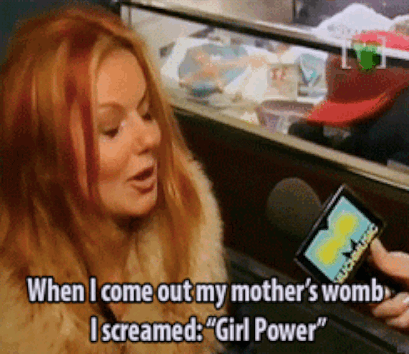
#13 - The Witch House, aka The Jonathon Corwin House
Our final urban legend belongs to one of the most historical buildings in Salem:
No, really, it’s the only structure in Salem still standing that had a hand in the witch trials. Not only has it witnessed dark and twisted histories of innocent people, it’s still home to some of them.
Jonathon Corwin - the former owner of the house - was a judge in the trials, and thus carried the memories of the trials with him back to his home, but with reports of torture in the basement and even his own burial down there after his murder, I think we can safely that many myths and legends will circle this house.
Add in a visit from the Ghost Adventures crew, and we can stamp on the Zak Bagan’s seal of approval.
No wonder it’s considered the most haunted house in Salem!
Now It’s Time To Hear What You Think:
Which urban legend is the winner of tonight’s fuck-off-i-cant-handle-the-spooks-man award?
And will you ever watch The Blair Witch Project again?
😍Up for more spooky stuff? Follow this blog and hear a new real ghost story everyday!😍
(Also this is me now.)

#the blair witch project#blair witch project#the blair witch project 2#book of shadows#curse of the blair witch#blair witch 2016#blair witch#blair witch project 3#the blair witch project true story#the witch project#heather donahue#elly kedward#rustin parr#based on a true story#based on real events#best horror movies#Horror Movies#horror films#feminism#feminist film#urban legends#True Ghost Stories#real ghost stories#paranormal evidence#paranormal activity#supernatrual#video evidence of paranormal#photographic evidence of ghosts#bell witch#The Perron Family
91 notes
·
View notes
Text
Spooky Month - IT’S OCTOBER!! * HALLOWEEN ‘19 *
1. Midsommar (2019) Directed by Ari Aster
Florence Pugh... what a star!
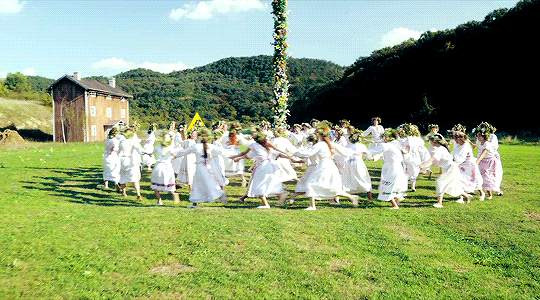
2. mother! (2017) Directed by Darren Aronofsky
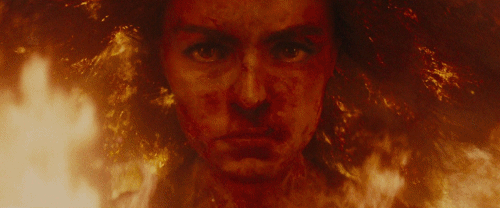
3. Shaun of the Dead (2004) Directed by Edgar Wright

4. It Chapter Two (2019) Directed by Andy Muschietti
Cryed the whole thing (not because I was scared)

5. The Blair Witch Project (1999) Directed by Daniel Myrick, Eduardo Sánchez
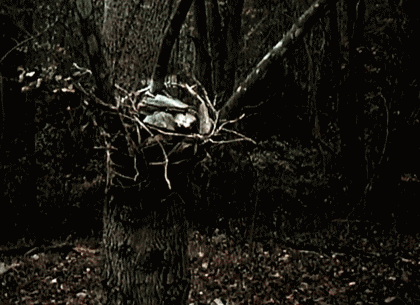
6. Book of Shadows: Blair Witch 2 (2000) Directed by Joe Berlinger
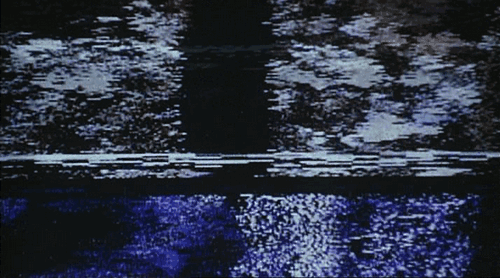
7. Hush (2016) Directed by Mike Flanagan
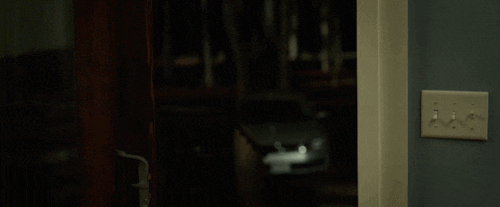
8. Scary Stories to Tell in the Dark (2019) Directed by André Øvredal
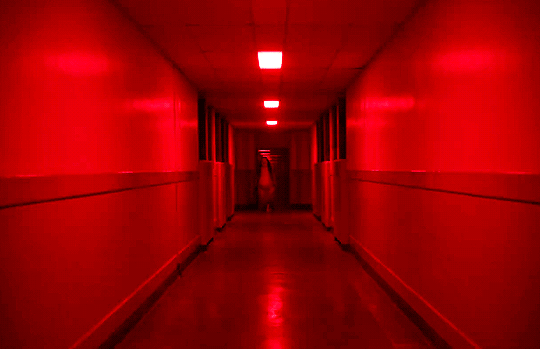
9. Monster House (2006) Directed by Gil Kenan
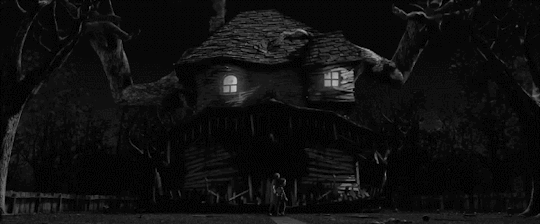
10. Killer Klowns from Outer Space (1988) Directed by Stephen Chiodo

11. The Witches (1990) Directed by Nicolas Roeg
ICONIC!
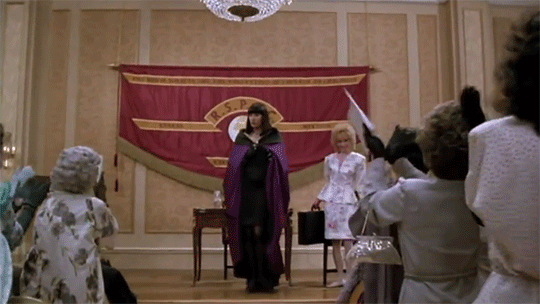
12. Little Monsters (2019) Directed by Abe Forsythe
Lupita Nyong'o it’s a QUEEN!

13. Frozen (2010) Directed by Adam Green
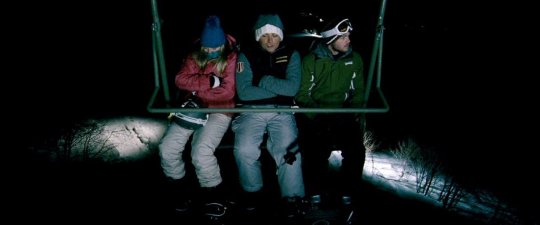
1 note
·
View note
Text
New Post has been published on Otaku Dome | The Latest News In Anime, Manga, Gaming, And More
New Post has been published on https://otakudome.com/hbo-max-january-2021-slate/
HBO Max January 2021 Slate
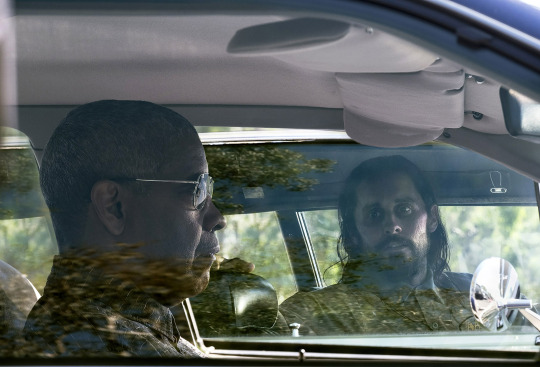
HBO Max has announced it’s January 2021 slate:
Spread the word, Upper Eastsiders — all six seasons of “Gossip Girl” are coming to HBO Max on January 1st. The month also brings the film premiere of Locked Down starring Anne Hathaway and Chiwetel Ejiofor, the second special episode of the Emmy®-winning drama “Euphoria,” the season four return of the beloved “Search Party,” and the two-part documentary “Tiger,” which illuminates the rise, fall and epic comeback of global golf icon Tiger Woods. Selena Gomez is back for seconds with a new season of “Selena + Chef,” and HBO Max is also serving up new episodes of “Looney Tunes Cartoons,” “Batman Beyond” and “Batman the Animated Series.”
On January 29, John Lee Hancock’s suspenseful psychological thriller “The Little Things” starring Academy Award winners Denzel Washington, Rami Malek and Jared Leto, premieres in theaters around the country and on HBO Max the same day. “The Little Things” will be available on HBO Max for 31 days from its theatrical release in the U.S. included at no additional cost to subscribers.
The third season of Italian crime drama “Gomorrah“ also joins the platform alongside both seasons of “Warrior” from Cinemax.
Catch up on the first season of the post-apocalyptic sci-fi thriller “Snowpiercer” when it arrives on HBO Max this month ahead of its Season 2 premiere on TNT. Or queue up a lineup of A-List movies including “The King of Staten Island,” the “Ocean’s” trilogy and “Ocean’s 8,” “The Notebook,” and Quentin Tarantino’s “Kill Bill: Vol 1″ & 2, “Pulp Fiction” and “Reservoir Dogs.“
And just a reminder as we get ready to ring in the new year: New and returning subscribers can sign up for a pre-paid offer and get 6 months of HBO Max at a discounted rate of $69.99 plus applicable taxes. Find out more at HBOMax.com.
TITLES COMING TO HBO MAX IN JANUARY
Exact Dates to be Announced:
Arthur’s Law, Max Original Series Premiere
The unemployed Arthur Ahnepol (Jan Josef Liefers) ekes out a bleak existence. Drawn from the strains of his unhappy marriage and bored to death, he makes a morbid plan: he wants his obnoxious wife to die. With the money from the life insurance there’s no obstacle for a restart with his beloved mistress. But an unwritten law dominates the life of the unlucky fellow: every problem solved by Arthur has a far worse effect. And so, he sets off an avalanche of disastrous events.
The Event, Max Original Series Premiere
An unprecedented look behind the scenes of the extraordinary events created by Wolfgang Puck Catering and legendary restaurateur Wolfgang Puck. From Renegade 83, each one-hour episode will follow various members of Puck’s team as they strive to amaze clients and surpass even the highest expectations.
Locked Down, Max Original Film Premiere
Just as they decide to separate, Linda (Anne Hathaway) and Paxton (Chiwetel Ejiofor) find life has other plans when they are stuck at home in a mandatory lockdown. Co-habitation is proving to be a challenge, but fueled by poetry and copious amounts of wine, it will bring them closer together in the most surprising way.
Perfect Life (fka Vida Perfecta), Max Original Season 1 Premiere
Maria, Esther and Cristina are three women in the middle of a life crisis. They have realized that the plans they had made for themselves haven’t really gotten them the long-promised happiness they yearned for. Together, they will find alternatives and make decisions that will lead them away from what society expects from them. They will soon realize that life doesn’t necessarily have to be what they always imagined.
Possessions, HBO Max Season 1 Premiere
The series tells the story of Natalie, a young French expatriate in Israel, who is charged with the murder of her husband on their wedding night. Karim, a French diplomat in charge of helping French citizens who have to deal with the Israeli authorities, slowly falls for Natalie. He cannot figure out whether the young lady is deeply lost and vulnerable, or dangerously manipulative. Obsessed with this case, Karim dives into Natalie and her family’s mysterious past.
Selena + Chef, Max Original Season 2 Premiere
The unscripted cooking series features the multi-platinum selling recording artist, actress, producer, entrepreneur, and philanthropist as she navigates unfamiliar territory: making delicious meals while stuck at home in quarantine.
January 1:
12 oz. Mouse, Seasons 1 & 2
42nd Street, 1933
All the President’s Men, 1976
Apple & Onion, Season 1B
The Autobiography Of Miss Jane Pittman, 1974 (HBO)
Batman Begins, 2005
Batman Beyond
Batman Beyond: The Return of the Joker, 2000
Batman: Bad Blood, 2016
Batman: Death in the Family, 2020
Batman: Hush, 2019
Batman: The Animated Series
Blade, 1998
A Better Life, 2011 (HBO)
Charlie and the Chocolate Factory, 2005
Dog Day Afternoon, 1975
Check It Out! with Steve Brule
Chinatown, 1974
Codename: Kids Next Door
The Color Purple, 1985
The Conjuring, 2013
Courage the Cowardly Dog
Craig of the Creek, Season 2
The Crocodile Hunter: Collision Course, 2002 (HBO)
The Dark Knight, 2008
The Dark Knight Rises, 2012
Dim Sum Funeral, 2009 (HBO)
Ed, Edd n Eddy
El Amor No Puede Esperar (Aka Love Can’t Wait), 2021 (HBO)
Happy Feet, 2006
The Electric Horseman, 1979 (HBO)
Escape from New York, 1981
The Exorcist, 1973
Flashpoint, 1984 (HBO)
The General’s Daughter, 1999 (HBO)
Gossip Girl
Green Lantern, 2011
Green Lantern: The Animated Series
Gremlins , 1984
Gremlins 2: The New Batch, 1990
The Grim Adventures of Billy & Mandy
Happily N’Ever After, 2007 (HBO)
Happily N’Ever After 2: Snow White, 2009 (HBO)
Happy-Go-Lucky, 2008 (HBO)
He Said She Said, 1991 (HBO)
Heaven Help Us, 1985 (HBO)
The Infamous Future, 2018
Jay And Silent Bob Strike Back, 2001 (HBO)
The Jellies
Justice League Dark: Apokolips War, 2020
Kong: Skull Island, 2017
Little Con Lili, 2021 (HBO)
Loiter Squad
Ma, 2019 (HBO)
Mad Max 2: The Road Warrior, 1983
Mad Max: Fury Road, 2015
Magic Mike, 2012
Mao Mao, Heroes of Pure Heart
March of the Penguins, 2005
Margaret, 2011 (Extended Version) (HBO)
Miracle On 34th Street, 1994 (HBO)
Miss Firecracker, 1989 (HBO)
Mulholland Dr., 2001
Mystic River, 2003
Nitro Circus: The Movie 3D, 2012 (HBO)
No Country for Old Men, 2007
The Notebook, 2004
Ocean’s 8, 2018
Ocean’s Eleven , 2001
Ocean’s Thirteen, 2007
Ocean’s Twelve, 2004
Pee-wee’s Big Adventure, 1985
Piter, 2021 (HBO)
The Producers, 1968
Pulp Fiction, 1994
Purple Rain, 1984
Ready Player One, 2018
Revenge Of The Nerds, 1984 (HBO)
Revenge Of The Nerds II: Nerds In Paradise, 1987 (HBO)
Revenge Of The Nerds IV: Nerds In Love, 2005 (HBO)
Rollerball, 2002 (HBO)
Se7en, 1995
Shallow Hal, 2001 (HBO)
Snowpiercer, Season 1
A Star is Born , 2018
Superman: Doomsday, 2007
Superman: Man of Tomorrow, 2020
Superman Returns, 2006
Swimfan, 2002 (HBO)
This Is Spinal Tap, 1984
The Three Stooges, 2012 (HBO)
TMNT, 2007
Tom Goes to the Mayor
The Trouble With Spies, 1987 (HBO)
Underclassman, 2005 (HBO)
V for Vendetta, 2005
Van Wilder: Freshman Year (Extended Version), 2009 (HBO)
Walk Of Shame, 2014 (HBO)
Warrior, Seasons 1 & 2 (HBO)
Willard, 1971 (HBO)
Worth Winning, 1989 (HBO)
You Can Count On Me, 2000 (HBO)
January 2:
The High Note, 2020 (HBO)
January 4:
30 Coins, Series Premiere (HBO)
January 8:
Patriot’s Day, 2016
Scream, 1996
Squish, Season 1
January 9:
The Alienist: Angel of Darkness, Season 2
Ben 10, Season 4A
The King Of Staten Island, 2020 (HBO)
January 10:
Miracle Workers, Season 2
Tiger, Two-Part Documentary Premiere (HBO)
January 12:
Against The Wild, 2014
Against the Wild 2: Survive the Serengeti, 2016
Alpha and Omega 5: Family Vacation, 2015
Alpha and Omega 6: Dino Digs, 2016
Batkid Begins: The Wish Heard Around the World, 2015
Blue Valentine, 2010
Book of Shadows: Blair Witch 2, 2000
Earth Girls Are Easy, 1989
An Elephant’s Journey , 2018
The Escape Artist, 1982
Get Carter, 1971
Hecho En Mexico, 2012
Hellboy: Blood and Iron, 2007
Hellboy: Sword of Storms , 2006
Hellboy: The Dark Below, 2010
Jennifer Lopez: Dance Again, 2016
The Killing of a Chinese Bookie, 1976
The Kingdom of Dreams and Madness, 2013
La Mujer de Mi Hermano , 2005
Leapfrog Letter Factory Adventures: Amazing Word Explorers , 2015
Leapfrog Letter Factory Adventures: Counting on Lemonade , 2014
Leapfrog Letter Factory Adventures: The Letter Machine Rescue Team , 2014
Leapfrog: Numberland, 2012
Lost and Delirious, 2001
Love and Sex, 2000
Lovely & Amazing , 2002
The Man Who Would Be King, 1975
Meatballs, 1979
The Men Who Stare at Goats, 2009
A Mermaid’s Tale, 2017
Mistress, 1992
Mother’s Day, 2012
Mud, 2013
Never-Ending Man: Hayao Miyazaki, 2016
Night is Short, Walk on Girl, 2017
No Eres Tu Soy Yo, 2011
Norm of the North: King Sized Adventure, 2019
Ollie & Moon, Seasons 1 & 2
Other Parents, Seasons 1 & 2
Pinocchio, 2012
Promare, 2019
Reservoir Dogs, 1992
Ride Your Wave, 2019
Righteous Kill, 2008
Sprung, 1997
The Spy Next Door, 2010
Tender Mercies, 1983
Thanks for Sharing, 2013
Turtle Tale, 2018
The Visitor, 2008
Vixen, 2015
January 14:
Search Party, Max Original Season 4 Premiere
In the new season, “Dory” (Alia Shawkat) is held prisoner by her psychotic stalker “Chip” (Cole Escola), who is determined to make Dory believe that they are best friends. Meanwhile, “Portia” (Meredith Hagner) is starring in a film about the trial, although not as herself; “Elliott” (John Early) has switched party lines to become a far-right conservative talk show host; and “Drew” (John Reynolds) is trying to escape his dark past by working as a costumed cast member in a theme park.
January 15:
Stephen King’s It, 1990
One Flew Over the Cuckoo’s Nest, 1975
Poltergeist, 1982
Re:ZERO -Starting Life in Another World- Director’s Cut, Season 1 dubbed (Crunchyroll Collection)
Real Time With Bill Maher, Season 19 Premiere (HBO)
Roots (Mini Series), 1977
Si Yo Fuera Rico (Aka If I Were Rich), 2021 (HBO)
The Wayans Bros
January 16:
Eve
Kill Bill: Vol. 1, 2003 (HBO)
Kill Bill: Vol. 2, 2004 (HBO)
January 19:
Everwood
January 20:
At Home with Amy Sedaris, Season 3
C.B. Strike, Season 1 (HBO)
C.B. Strike: Lethal White, Limited Series Premiere (HBO)
January 21:
Gomorrah, Max Original Season 3 Premiere
The iconic Italian crime series Gomorrah is based on Roberto Saviano’s bestselling book that examines the account of the decline of Naples under the rule of the Camorra.
Looney Tunes Cartoons, Season 1C
In this latest batch, Taz stars in his first full-length Looney Tunes Cartoons short when he takes on Bugs Bunny in a Roman coliseum. If Bugs makes it out of the arena, there will be plenty of foes waiting to match wits with him including Elmer Fudd, a leprechaun and Cecil Turtle. Daffy and Porky continue their misadventures from skydiving to solving the mystery of Porky’s missing pants! Fan-favorites Sylvester and Tweety along with Wile E. Coyote and Road Runner also come along for the ride in these ten all-new animated episodes. It’s an all-new year with all-new Looney!
January 22:
The New Adventures of Old Christine
Painting With John, Series Premiere (HBO)
January 23:
Don’t Let Go, 2019 (HBO)
Person of Interest
January 24:
Euphoria Special Episode Part 2: F*ck Anyone Who’s Not a Sea Blob, Special Episode Premiere (HBO)
January 26:
Babylon 5
Real Sports With Bryant Gumbel (HBO)
January 29:
¡Animo Juventud! (Aka Go Youth!), 2021 (HBO)
The Little Things
Academy Award winners Denzel Washington, Rami Malek and Jared Leto star in John Lee Hancock’s suspenseful psychological thriller “The Little Things” about two California sheriffs and their growing obsession with a suspect while embroiled in the search for a killer targeting women.
What I Like About You
January 30:
The Mummy, 1999 (HBO)
The Mummy Returns, 2001 (HBO)
Pushing Daisies
The Scorpion King, 2002 (HBO)
January 31:
Axios, Season 4 Premiere (HBO)
LAST CHANCE TO CATCH: SELECT TITLES LEAVING HBO MAX IN JANUARY
January 7:
War Dogs, 2016 (HBO)
January 24:
Wonder Woman 1984, 2020
January 31:
Ad Astra, 2019
After Hours, 1985 (HBO)
Akeelah And The Bee, 2006 (HBO)
All Is Bright, 2013
America, America, 1964
Anchors Aweigh, 1945
The Arrangement, 1969
Bee Season, 2005 (HBO)
Before Sunrise, 1995 (HBO)
Before Sunset, 2004 (HBO)
Best Laid Plans, 1999 (HBO)
Bigger Than The Sky, 2005 (HBO)
Blade II, 2002
Blade, 1998
Blood Simple, 1984 (HBO)
Bridge To Terabithia, 2007 (HBO)
Bright Lights, Big City, 1988 (HBO)
The Change-Up, 2011 (HBO)
The Children, 2009
A Christmas Carol, 1938
Crash, 2005 (Director’s Cut) (HBO)
David Copperfield, 1935
Days After Your Departure, 2019 (HBO)
Enemy Of The State, 1998 (HBO)
Everybody’s All-American, 1988 (HBO)
Father’s Day, 1997 (HBO)
Friday Night Lights, 2004 (HBO)
Get On Up, 2014 (HBO)
Guys And Dolls, 1955
High Society, 1956
Jeepers Creepers 2, 2003 (HBO)
Jeepers Creepers, 2001 (HBO)
Leprechaun 2, 1994 (HBO)
Leprechaun, 1993 (HBO)
Magnolia, 1999 (HBO)
The Man With The Golden Arm, 1955
Mars Attacks!, 1996
Martha Marcy May Marlene, 2011 (HBO)
Martin Lawrence You So Crazy, 1994 (HBO)
New Year’s Eve, 2011 (HBO)
Ocean’s Eleven, 2001
Ocean’s Thirteen, 2007
Ocean’s Twelve, 2004
On The Town, 1949
The Pelican Brief, 1993
Planet Of The Apes, 2001 (HBO)
Risky Business, 1983
Semi-Pro, 2008
Some Came Running, 1958
Something Borrowed, 2011 (HBO)
Splendor In The Grass, 1961
Walk The Line, 2005 (Extended Version) (HBO)
When Harry Met Sally, 1989
0 notes
Text
The 5 Most Disappointing Sequels (& 5 Most Underrated) Of All Time
There’s no doubt that we’re living in a heydey for sequels. The only trouble is in sorting the good from the bad. Sometimes, a sequel can be built up to perfectly over time only for the final product to feel like it had no effort put into it at all. Other times, sequels can come and go so quickly in the life of a franchise that greatness passes by unnoticed.
Here are five sequels that failed to live up to the expectations set by their outstanding predecessors and five that deserve more appreciation than they’ve received from critics and the public at large.
10 Disappointing - Jack Reacher: Never Go Back
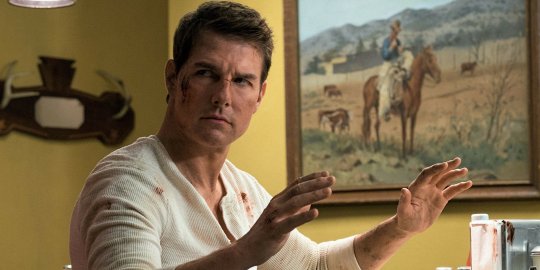
Christopher McQuarrie has been one of Tom Cruise’s most significant creative collaborators from the past decade and the two of them found an understated kind of magic when McQuarrie stepped into the role of director on Jack Reacher.
RELATED: Tom Cruise’s 10 Most Memorable Characters
The two would go on to parlay that chemistry into Cruise’s flagship franchise, the Mission: Impossible series, to great success. But it left the Jack Reacher franchise in need of a new director and Edward Zwick’s follow up, Never Go Back, contains none of the things that charmed about the original. The score, cinematography, choreography and overall style of storytelling are noticeably altered, and none of them for the better.
9 Underrated - A Nightmare On Elm Street 2: Freddy's Revenge

The first sequel to Wes Craven’s smash hit 1984 horror movie A Nightmare on Elm Street is one of its strangest, and that really is saying something. Initially panned by critics and considered the black sheep of the franchise by fans, Freddy’s Revenge has only grown in notoriety and popularity over the decades because of its glaringly apparent homoeroticism.
It’s a subject that’s caused controversy that exists to this day, centering around lead actor Mark Patton’s feelings of being outed by the movie, with writer David Chaskin only admitting to the blatantly overt themes in the screenplay relatively recently. Patton has since produced a documentary titled Scream, Queen! My Nightmare on Elm Street which illustrates his experience with the movie and homophobia in Hollywood at that time.
8 Disappointing - U.S. Marshals

Tommy Lee Jones’ performance in The Fugitive not only earned him his much-deserved Oscar, it produced one of the most famous pieces of of improvised dialogue in the history of cinema. With seven other Oscar nominations for the movie, it was no surprise that a sequel centering on Jones’ secondary character got greenlit.
RELATED: 10 Best Robert Downey Jr. Roles According To Rotten Tomatoes
U.S. Marshals was – and still, very much, is – a black hole a of a movie. Sheer, crushing, nothingness. You can’t even really hate it because, to hate it, you’d first need to remember it. A quality made all the more baffling by the fact that Jones was joined by immensely charismatic supporting actors Robert Downey Jr. and Wesley Snipes.
7 Underrated - Beneath The Planet Of The Apes

The first sequel to the infamous adaptation of Pierre Boulle’s original novel, Planet of the Apes, was a success on release, spawning a series of sequels and reboots lasting right up until today. But it remains one of the most poorly reviewed of the Apes movies despite being one of the best.
Beneath the Planet of the Apes is daringly bleak in its outlook, even topping the original’s ending in terms of abrupt shock value. Few stories that are designed to make money for more sequels have the kind of guts to end all life on Earth and leave the audience walking out in total silence as the credits roll.
6 Disappointing - Ocean’s Twelve

Steven Soderbergh’s remake of the Rat Pack classic was an intoxicating serenade to stardom itself. Its lightning-in-a-bottle brilliance was unlikely to have been recaptured by anyone and, while they do seem consciously aware of that fact, the sequels inescapably feel like a waste of the talent involved.
RELATED: 21 Wild Details Behind The Making Of The Ocean's Movies
While Ocean’s Eleven felt like it was pulling off an impossible trick, its true power came from a masterful balancing of tone between thoughtful melancholy and comedic hijinks. Ocean’s Twelve got all of Ocean’s Eleven’s brainy qualities but none of its fun ones, and Ocean’s Thirteen vice versa.
5 Underrated - RoboCop 2

After taking over from George Lucas on Empire Strikes Back and securing Star Wars as one of cinema’s most significant franchises, Irvin Kershner only directed two more movies. Never Say Never Again, which brought Sean Connery back to the role of James Bond for one last time after two retirements and, finally, the sequel to Paul Verhoeven’s iconic 80s sci-fi splatterfest RoboCop.
RoboCop 2 was considerably less loved when it came out but its memory has remained as vivid, particularly as it’s one of the science-fiction movies of that era that made an accurate prediction of the future. Unfortunately that prediction was the bankruptcy of the city of Detroit but it does highlight the movie’s achievements in social satire. Kershner generally amplified what was most enjoyable about RoboCop, especially the work of visual effects guru Phil Tippet.
4 Disappointing - The Ring Two

Gore Verbinski’s remake of Hideo Nakata’s seminal horror movie was worthy of the original in every way. It was so successful, unfortunately, that it’s largely thought of as the catalyst for Hollywood’s subsequently careless pillaging of Asian horror movies for remakes over the following years. It was, however, Nakata himself who ruined the American version of the series with the monumentally inferior sequel.
RELATED: The 13 Most Underrated Horror Sequels Of All Time
Interestingly enough, just after shooting began, The Ring Two’s production offices had to be cleared out after they were seriously flooded in, what the assistant production coordinator described as, “something out of a horror movie, for lack of a better term.” The eerie connection between water and evil in the movies wasn’t lost on the cast and crew but, unfortunately, nobody took the hint.
3 Underrated - Predators
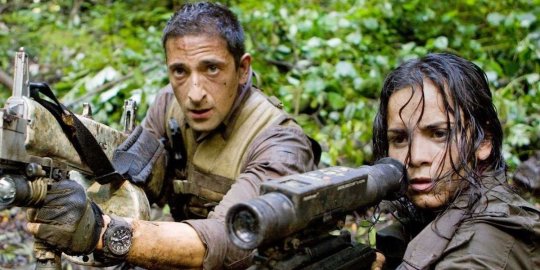
A few years after breaking into Hollywood with his $7000 indie debut El Mariachi, Robert Rodriguez was working on his first studio movie for 20th Century Fox and submitted a treatment to them for a Predator sequel. It was dismissed and buried in a pile somewhere for fifteen years until it was unearthed and finally greenlit.
With a flawless cast and a creative drive from a much more emboldened Rodriguez – now with his own studio to produce the movie how he wanted it – Nimród Antal’s sequel delivered the most devout recreation of the original Predator’s sense of fun so far. Naturally, everything that worked about it was abandoned for a far more unsuccessful reboot made under stricter studio control. That’s show business for you.
2 Disappointing - Book Of Shadows: Blair Witch 2
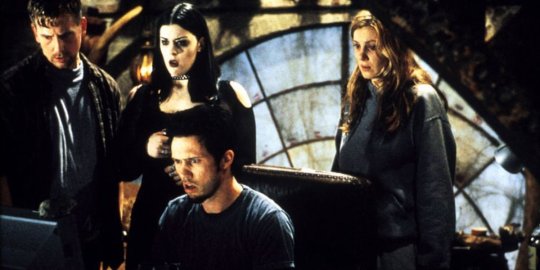
The sequel to the game-changing found footage horror movie The Blair Witch Project was a rushed affair, as sequels to surprisingly successful low budget horror movies often are. The sequel debuted in cinemas a grand total of fifteen months after the original and dumped both its narrative universe and its defining found footage style.
RELATED: 15 Worst Horror Movies Of All Time
Whilst it’s true that Book of Shadows isn’t as bad as its reputation suggests it definitely isn’t that good either. Most reappraisals focus on what the social commentary of the movie was intended to be before studio mandated last-minute reshoots and editing changed it. But there’s no real evidence that the original vision would have been much better.
1 Underrated - The Color Of Money
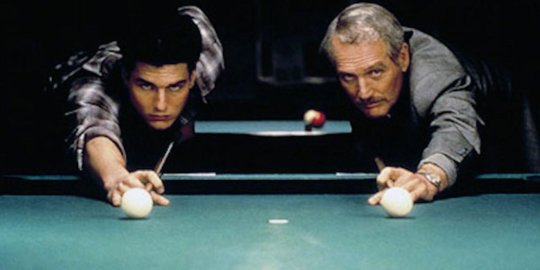
Released twenty-five years after the original, Martin Scorsese’s continuation of Robert Rossen’s towering 1960s pool drama The Hustler stands as one of the most underappreciated Scorsese movies, sports movies, and sequels of all time.
The movie certainly has appreciation, it won returning star Paul Newman an Oscar for Best Actor. It wasn’t without its detractors, however. It generally did well critically but it received Scorsese’s only Two Thumbs Down ever from Siskel and Ebert. Ebert being one of many who speculated that Newman only won the Oscar as a show of respect for The Hustler but Newman already had an honorary Oscar for acting from just the previous year.
Legacy aside, The Color of Money is one of Scorsese’s boldest and most experimentative movies. It respects the original absolutely but never lives in fear of it, creating a timely update of The Hustler’s examination of American dramatic character.
NEXT: 25 Best Movie Sequels Ever Made
source https://screenrant.com/movie-sequels-disappointing-underrated/
0 notes
Text
cyberyond replied to your post
piri i need horror movie recs it's been too long since i saw a good oNE
this ended up becoming Piri’s Ultimate List Of Horror Recs (2017 Version) so i’m putting it under a cut rip
note: this list has trigger warnings but i am operating under the assumption that you are okay with the standard level of explicit sexuality, vulgarity, violence, and gore present in mainstream horror movies
horror
original nightmare on elm street series, but especially 1, 3, 4, 6, and freddy vs. jason (tw for implied pedophilia and explicit child murder, tw for rape in #6)
friday the 13th (original and remake)
honestly all the friday the 13th sequels are A Treasure but if you want The Core Canon watch 1-3
my bloody valentine (original)
psycho (original) and tbh all its sequels (tw for sort-of-kind-of incest vibes)
psycho ii and psycho iv are my favorites because (1) meg tilly is adorable in psycho ii and (2) psycho iv has a harley/norman cameo and nobody can convince me otherwise
child’s play, child’s play 2, bride of chucky, maybe some sequels after that idk i haven’t seen them yet :(
scream franchise
not the mtv scream series
i mean s1 is decent but there are definitely other horror shows that i would recommend more
1-3 are the best, 4 is worth watching if you really like the characters but as a concept the series has p much run its course by then
tw for rape mentions in scream 3
predator
peeping tom
kenneth branagh’s frankenstein (tw for a graphic depiction of death in childbirth)
james whale’s frankenstein
bride of frankenstein
the phantom of the opera (1925)
the phantom of the opera (1989) (tw for a much grosser depiction of the phantom story than the 1925 or 2004 versions; i wanna say all tws are left at implication but i haven’t seen it in a while so i’m not sure)
alien franchise
the wolfman (2010)
darling (tw for rape)
house on haunted hill (original and remake)
final destination franchise
medium raw: night of the wolf (tw for pedophilia and child murder)
the babadook
the final girls [horror comedy]
the shining (tw for implied child abuse)
the cabin in the woods
hellraiser
heathers (tw for eating disorders, suicide, everything high school kids are insensitive assholes about)
from dusk til dawn
an american werewolf in london
the guest
it follows (tw for dubious consent)
nightwatch (tw for implied necrophilia/descriptions of necrophilia, self-mutilation)
re-animator (tw for rape, pedophilia mentions)
carrie (original) (tw for child abuse, religion iconography)
the remake had some interesting like... subtext/imagery but other than that it was pretty *wet fart noise*
the awakening
the craft
the blair witch project
honestly i loved the book of shadows: blair witch 2 bc it kind of parallels the crucible but i can admit that objectively it is Terrible
elvira, mistress of the dark [spooky comedy]*
american mary (tw for rape, (consensual surgical) genital mutilation)
fright night (original and remake)
jaws
halloween franchise
1-5 are the best imo but no matter what skip #3 because it literally has nothing to do with any of the other movies
not the rob zombie remakes, those are awful
let the right one in [swedish (?) film, watch with subtitles]
rosemary’s baby (original)
night of the living dead (original)
28 days later
suspiria
silent hill (tw for child molestation)
crimson peak (tw for incest)
the lost boys
interview with the vampire
the ring
one missed call
the raven (2012)
repo! the genetic opera
teeth (tw for rape, incest, t’s??????? about a girl who has razor-sharp teeth in her vagina and how that coincides with her sexual awakening as a very straight-laced religious person???? so idk like watch it for The Wild Ride if you want but watch at your own discretion)
american psycho (tw for rape, general misogyny)
sweeney todd
speaking from experience, this is much better live, the movie sucked out all the fun and humor that wasn’t literally written into the lyrics, so i recommend watching the original broadway cast on youtube or something
there’s also a 1936 movie but i haven’t seen it so i can’t speak to its quality BUT i would recommend it on the basis of it being made before the musical was created and thus being based more directly on “the string of pearls” novel which is where the sweeney todd urban legend was originally documented
abott and costello meet [insert universal horror monster here] [spooky comedy]
little shop of horrors (original and remake) [spooky comedy]
the last man on earth (1964)
adapted from the same book i am legend (2007) was adapted from but the last man on earth stays much closer to the original book
c. h. u. d.
ghostbusters (1984 and 2016 versions) [spooky comedy]
ghost ship
sick girl (tw for bugs, pregnancy horror)
misery (tw for torture)
puppet master (tw for rape)
the haunting in connecticut
zombieland [horror comedy]**
jurassic park series
lizzie borden took an axe
*spooky comedy: a comedy movie with a spooky premise that i am categorizing with horror movies due to the genre overlap, but that lacks the intense violence, gore, etc. of a horror movie
**horror comedy: a spooky comedy that does not lower the level of violence, gore, etc. that is standard in a horror movie
thrillers
stoker (tw for incest, has a scene in which the protag’s mother verbally abuses her)
m [german film, watch with subtitles] (tw for themes of pedophilia/child molestation/child murder, but it’s worth noting that the whole point of the movie is to condemn and demonize pedophilia)
also one of if not the very first detective movies
nightcrawler (tw for rape)
the vvitch/the witch/however the fuck it’s spelled
rear window (original)
zodiac
hannibal lecter franchise (tw for cannibalism, obviously)-- the silence of the lambs, hannibal, red dragon, manhunter
manhunter is adapted from the same book red dragon is (red dragon) except manhunter was made before anthony hopkins became The Iconic Hannibal Lecter(TM) so it focuses much more on will graham and francis dolarhyde
hannibal rising is worth watching for gaspard ulliel’s performance but the book was much better
the hannibal movie adaptation changed the ending of the hannibal book while still maintaining a really good and really compelling storyline so the book and movie are definitely both highly recommended by me
gone girl
shutter island (tw for asylum horror)
pan’s labyrinth
documentaries
cropsey (documentary on child murders)
urban legends (another documentary, by the same people, talks about how real-life crime affects the american psyche and lives on as urban legends/horror tropes)
the poisoner’s handbook
h. h. holmes
nightmares in red, white, and blue
his name was jason
never sleep again: the elm street legacy
television
bates motel
ahs s1 (tw for... literally everything)
slasher
similar basic premise as ahs, but imo ahs is v exploitative and builds the plot on violence and vice, whereas slasher builds the violence and vice on the plot
supernatural (LISTEN........ LISTEN....................... conceptually it’s the bees knees okay)
penny dreadful (tw for constant explicit sexuality, religious iconography/sacrilege, asylum horror)
criminal minds
bbc broadchurch
bbc river
bbc sherlock but literally only ep. 3.4 “the abominable bride”
rosemary’s baby (2-part made-for-tv movie)
podcasts
the black tapes podcast
small town horror
alice isn’t dead
king falls am [spooky comedy]
limetown
welcome to night vale [spooky comedy]
video games
until dawn
outlast series
#outtajokes.#cyberyond#@ anyone reading this on mobile: I AM SO SORRY#piri's ultimate list of horror recs
18 notes
·
View notes
Text
i really havent changed my icon in years huh..............at this point i AM kim director in book of shadows: blair witch 2
#sorry to kim director#my icon theme across social media platforms is goth girls in bad b horror and it is my pride and joy#the arts of prophecy are often tautological
6 notes
·
View notes
Note
9, 15, 16, 21 for the film ask game !! 🎥
omg hello omen thank you for the ask!! :D
9. The most aesthetically pleasing movie you’ve ever watched?
Ive always been super blown away by House (1977) its visuals are really unparalleled!! and a bit of a basic answer maybe but I still have a soft spot for Suspiria (1977) i mean there's a reason why there’s so many gifsets of it right .....
15. A film everyone loves but you hate?
ooohhh like I said in the previous ask very rarely do I hate movies but uhhmm...i guess among 80s horror comedy fans American Werewolf in London (1981) is held up pretty highly (a 3.8 on letterboxd!) but I've always thought it was a bit overrated aside from the transformation scene
16. A film you love but everyone else hates?
TOO MANY....mostly because I am a horror sequel enjoyer..Notably I’ve defended Friday the 13th Part 7: The New Blood, Saw: The Final Chapter, Hellraiser: Hellseeker....even my icon on this blog is from the widely hated Book of Shadows: Blair Witch Project 2 kjhfgkdflhg
21. A film with an amazing soundtrack?
I loved the Santa Sangre (1989) one sooooo much
2 notes
·
View notes
Link
Peacock is here, adding thousands of hours of content on top of the already endless list of things we have at our disposal to watch. The streaming service comes from NBCUniversal and features a ridiculous amount of TV shows and movies to consume. Where do you start, though?
First of all, take a look at everything already leaving Peacock. Many of the blockbuster films that might have drawn you to the service will be departing shortly, even though the service launched widely today. Combine that with our overall thoughts on Peacock and you might question whether it's worth trying out at all. If you're like us, though, and you need a complete set of streaming services to choose from, there are quite a few excellent moves for you to delve into on the service.
Below, we've come up with the 20 movies most worth watching right away. Some of these you've likely seen many times before but are always worth another viewing. Others, though, might be new discoveries for you to enjoy. Whatever the case, you'll have plenty to watch while you wait for The Office to finally be added in full.
1. All Things Must Pass: The Rise and Fall of Tower Records
If you were a child of the '80s or '90s, chances are you are at least somewhat familiar with Tower Records. The iconic chain music store had locations around the world before online music became a thing and it was eventually driven out of business. This documentary, directed by Jumanji: Welcome to the Jungle star--and noted son of Tom Hanks--Colin Hanks, digs into the store's history, its expansion throughout the '90s, and its eventual bankruptcy. If you've never seen this documentary, it's more than worth your time and shows just how devoted people were to this chain, including some of the biggest stars in the music industry.
2. American Psycho
Before Christian Bale played Batman, he portrayed a fictional serial killer named Patrick Batemen in this very weird and entertaining 2000 adaptation of a Bret Easton Ellis novel. Bateman is an investment banker with a dark side who brutally murders people at random, usually while dancing to '80s pop music and spouting music trivia. The film is told from his point of view, as he searches for meaning.
3. Back in Time
What better series of movies to do a documentary on than Back to the Future? Back in time is loaded with new interviews, plenty of behind-the-scenes stories, and a deep dive into what made this franchise so special.
4. Fletch
Sure, these days Chevy Chase is best known for playing horrible human being Pierce Hawthorne on the TV show Community. In the '80s, though, Chase had quite the film career, including the National Lampoon's Vacation franchise. Fletch is some of his most entertaining work. It's a comedy in which he plays a news reporter and master of disguise (Not really, he just puts on costumes and pretends to be other people) trying to get to the bottom of a millionaire's plot to have him killed. It's absurd and very funny.
5. Universal monster movies
What would a streaming service from NBCUniversal be without the Universal monsters? Peacock is filled with classic Universal monster movies, from Dracula and Frankenstein to The Creature from the Black Lagoon and Abbot and Costello Meet Dr. Jekyll and Mr. Hyde. There's even an entire section of the service dedicated solely to these classic films.
6. Highlander
There can only be one! The 1986 film about a sword-wielding immortal named Connor MacLeod (Christopher Lambert) launched a franchise that included multiple movie sequels and several TV shows. Only the first movie is available, but it's worth watching--especially if you love battles to the death.
7. Howard the Duck
This is obviously the most important Marvel movie of all time. Who needs the Avengers when you have Howard the Duck? Yes, long before he was an Easter egg in Guardians of the Galaxy, Howard the Duck had his own movie, and it's somehow wonderful and terrible all at once. The plot is utterly ridiculous: Howard is propelled from his duck-filled world to Earth, where he agrees to manage a rock band. Then he finds out why he's really there: to stop a laser from destroying his home planet. Watch this movie and marvel (get it?) at what comic book movies were back in 1986.
8. I Am Big Bird
Ever wonder what life was like living inside of a giant bird puppet? This documentary explores the life of Caroll Spinney, the man who portrayed Big Bird on Sesame Street from 1969 until 2019, performing both in-costume and the character's voice. It's a fascinating look at the person behind one of pop culture's most iconic figures.
9. King Ralph
While you may know him as the dad from Roseanne/The Conners, or the guy from 10 Cloverfield Lane, or even Walter from The Big Lebowski, John Goodman also starred in 1991's King Ralph. In the film, the entire British royal family dies in a freak electrocution accident, and American lounge singer Ralph Jones (Goodman) winds up becoming the King of England. Is it a ludicrous setup for a film? Absolutely. Is it a funny movie? Absolutely.
10. Man on the Moon
Jim Carrey's performance as Andy Kaufman is spellbinding to watch in this biopic that studies the comedian's career. Whether he's wrestling Jerry "The King" Lawler or assuming the alter ego of lounge singer Tony Clifton, it's hard to look away from Carrey as Kaufman in this movie.
11. Matinee
Peacock really does love John Goodman. In Matinee, King Ralph himself stars as a movie producer trying to mount a preview of his B horror movie in Florida during the Cuban missile crisis. While set during a very serious and troubling period, this comedy is ultimately very funny--and at points truly bizarre thanks to director Joe Dante (Gremlins, Small Soldiers). If ever you've wanted to see Goodman get punched out by someone in a mutant ant costume, this is the film for you. And if you haven't wanted to see that, it should probably be on your list now.
12. Psycho
The horror classic is one of many Alfred Hitchcock films available on Peacock. You can also watch The Birds, Rear Window, Vertigo, and Rope, among many others.
13. Reservoir Dogs
Before Pulp Fiction, this was the movie that put Quentin Tarantino on the map. Shot on a small budget with an A-list cast, Reservoir Dogs is one of the most interesting heist movies you'll ever see. What makes it so interesting--and cheap to make--is that you don't actually see the heist. Instead, you see the planning and then the aftermath when it all goes horribly wrong. Rather than focusing on the actual heist, Reservoir Dogs is a character study as you watch these relative strangers fall apart when their seemingly perfect plan doesn't work out.
14. Silent Running
Silent Running, which was released in 1972, is never included in discussions about the best sci-fi movies and that's a serious mistake. It's set in a future where all plant life on Earth is dead and a botanist (Bruce Dern) tends to some of the last existing vegetation on what is essentially a space station connected to a commercial freight ship. Things take a drastic turn when he learns the plant life is to be destroyed and sets out to protect it at all costs.
15. Sleepaway Camp
You won't find much on Peacock from the slasher subgenre of horror films. However, the first Sleepaway Camp movie is there and if you've somehow never seen it before, get ready for a wild ride. It's a familiar story of teenagers at a summer camp where bodies start piling up, but the journey is a fun one and it led to sequels. While you won't find those on Peacock, they are on Shudder.
16. The Blair Witch Project
The Blair Witch Project is the found footage movie that all other found footage movies aspire to be. From the moment the first trailer for this film premiered before screenings of Star Wars: The Phantom Menace, audiences were terrified of whatever was going to happen on-screen. The end result is a low budget horror movie that remains absolutely terrifying to this day. Peacock also has the non-found footage sequel, Blair Witch 2: Book of Shadows. You can skip that one, though.
17. The Bourne Identity
The first Jason Bourne movie remains the best Jason Bourne movie. The Bourne Identity introduced Matt Damon as the action star nobody knew he could be. Playing Jason Bourne, a man with amnesia and incredible fighting skills that many people seem to want dead, Damon and director Doug Liman created a gritty and violent action film that launched a franchise--and a theme park stunt show.
18. The Matrix
Of course, you've seen The Matrix. Everybody has seen The Matrix. You're probably one of the unfortunate souls that sat through sequels to The Matrix too. And when The Matrix 4 hits theaters, you'll line up to see that too. That doesn't mean you should stop rewatching the original, though, and Peacock has it ready and waiting for you. The sequels are also there but don't do that to yourself.
19. The Mummy
Sure, you could watch the old Mummy movies where he's one of the Universal monsters. Instead of that, though, you should watch Brendan Frasier fight the Mummy. What movie hasn't been improved by having Brendan Frasier in it? This take on the Mummy, which is more action than horror, is fun and is ready to stream on Peacock--along with 2001's The Mummy Returns.
20. You're Next
2013's You're Next is a thrilling and inventive horror movie in which a house full of people is being taunted by home invaders as they are picked off one-by-one. Produced on a tiny budget and released just a couple of months after The Purge, You're Next wasn't the box office smash it deserved to be. Thankfully, though, it can find a new audience on Peacock.
from GameSpot - All Content https://ift.tt/2Oqjduo
0 notes